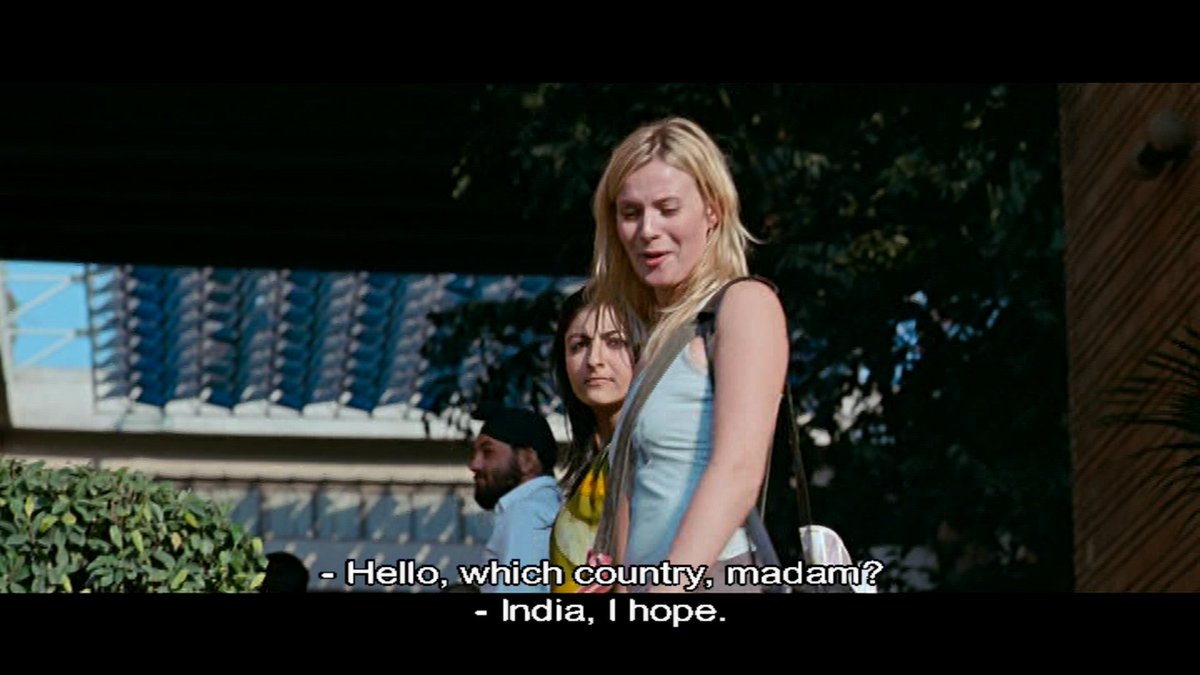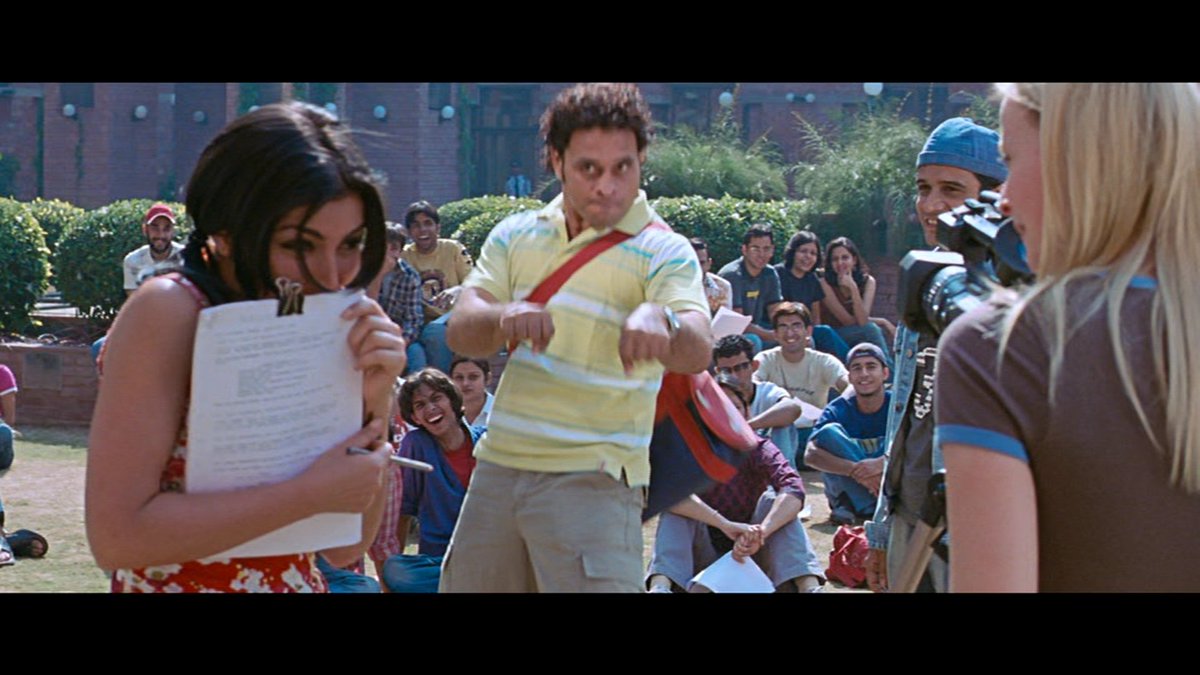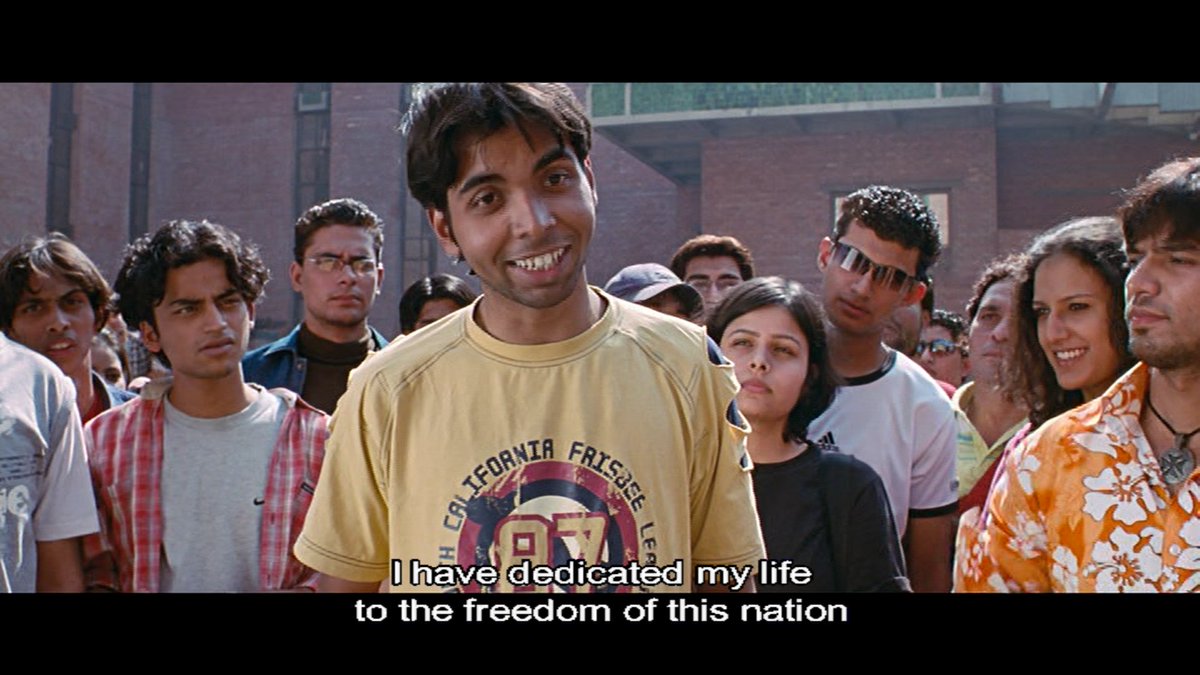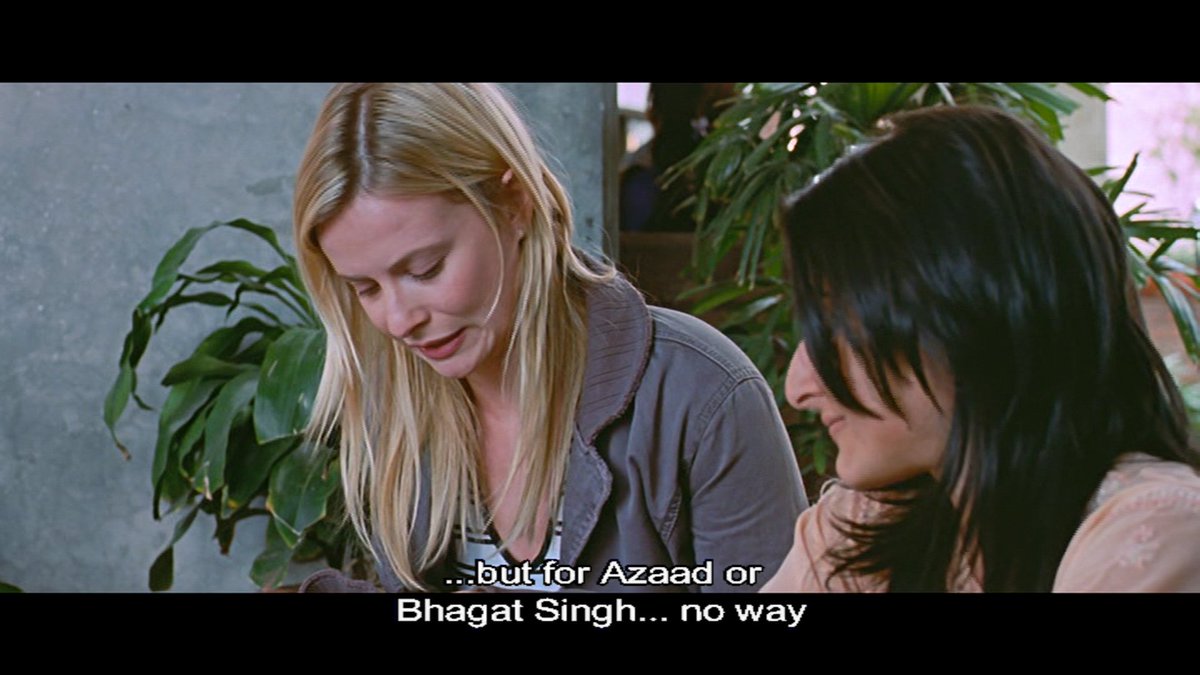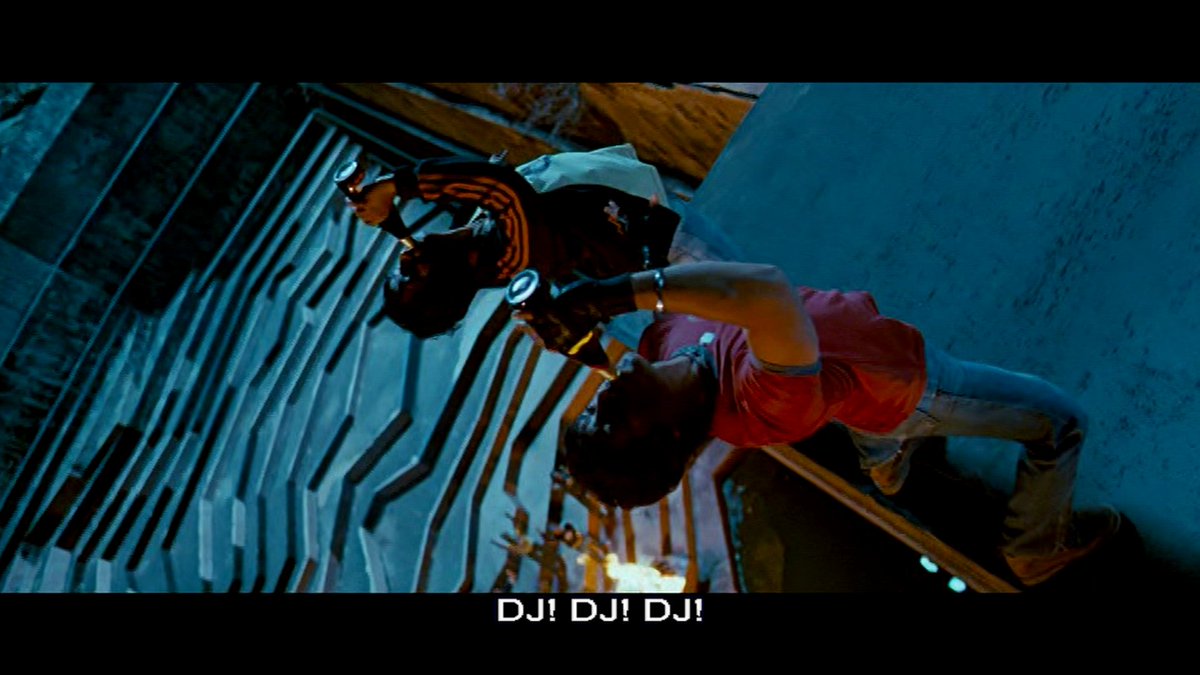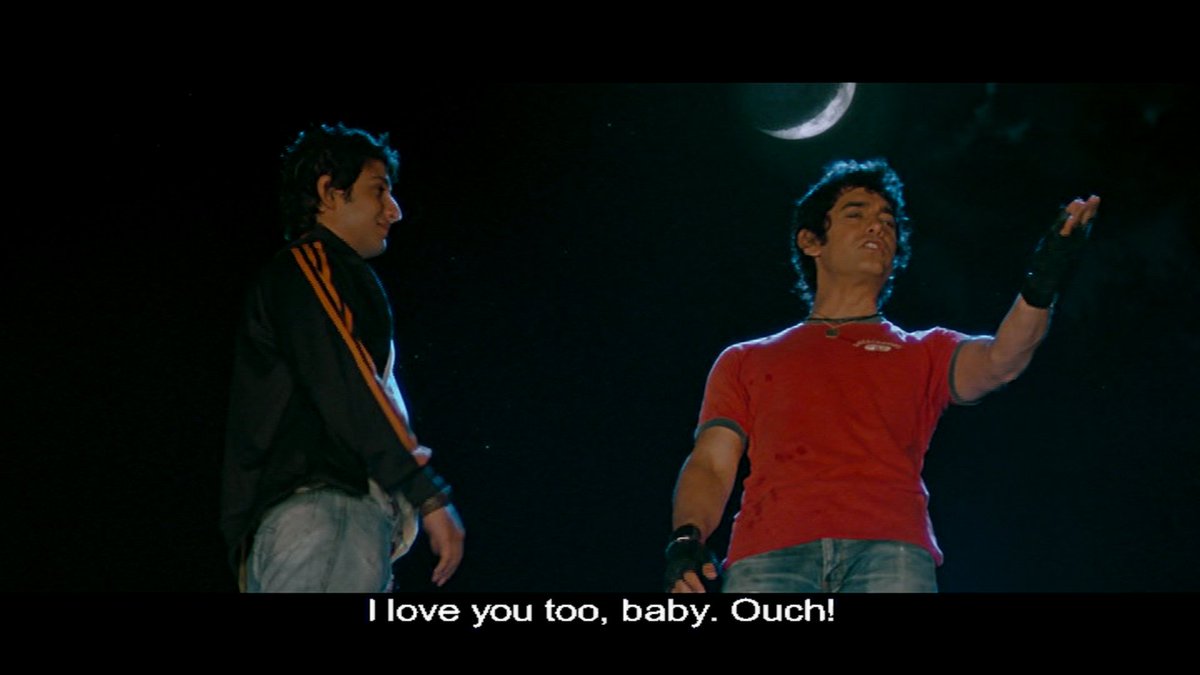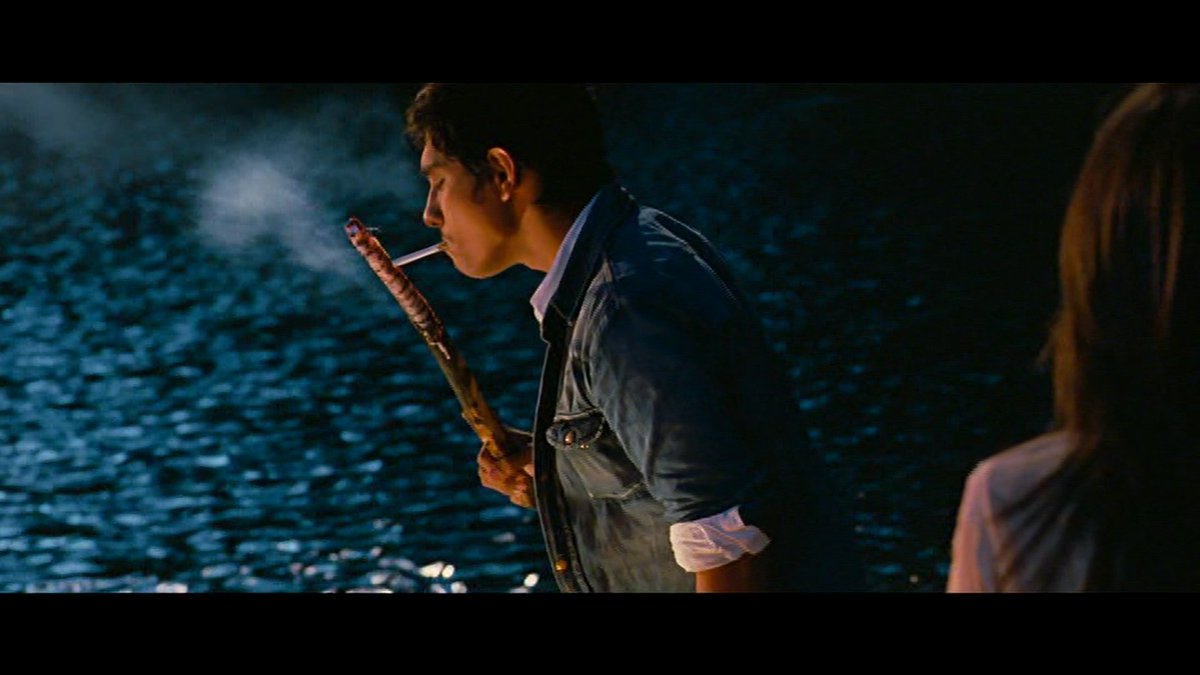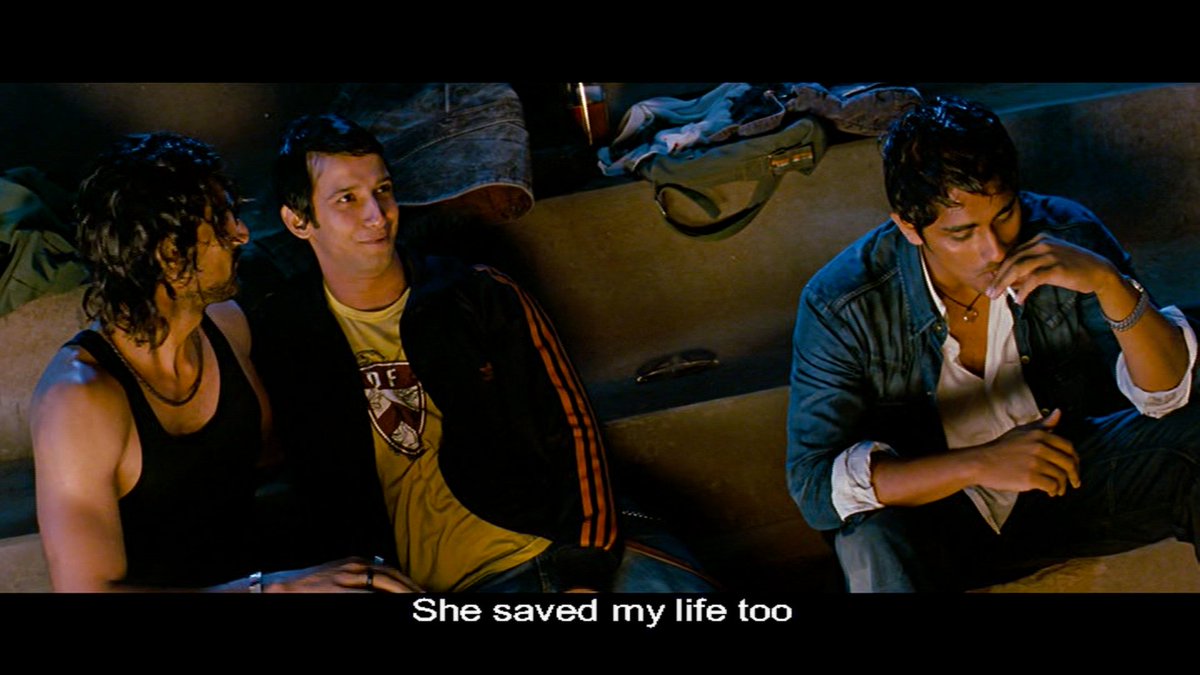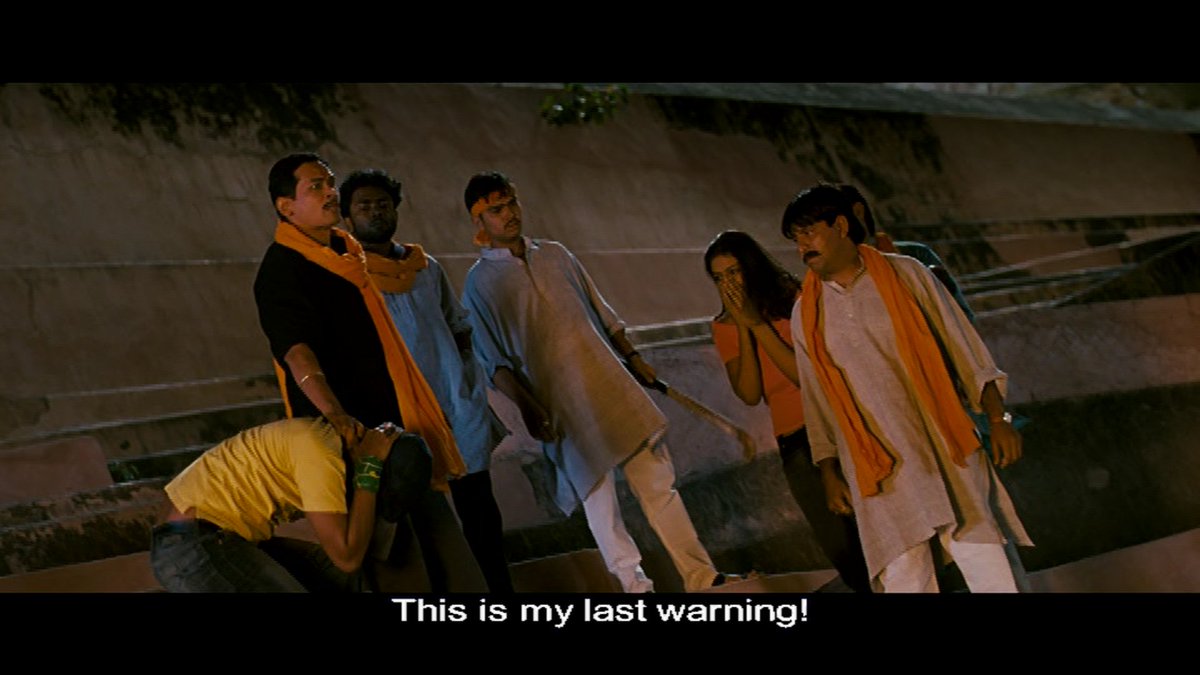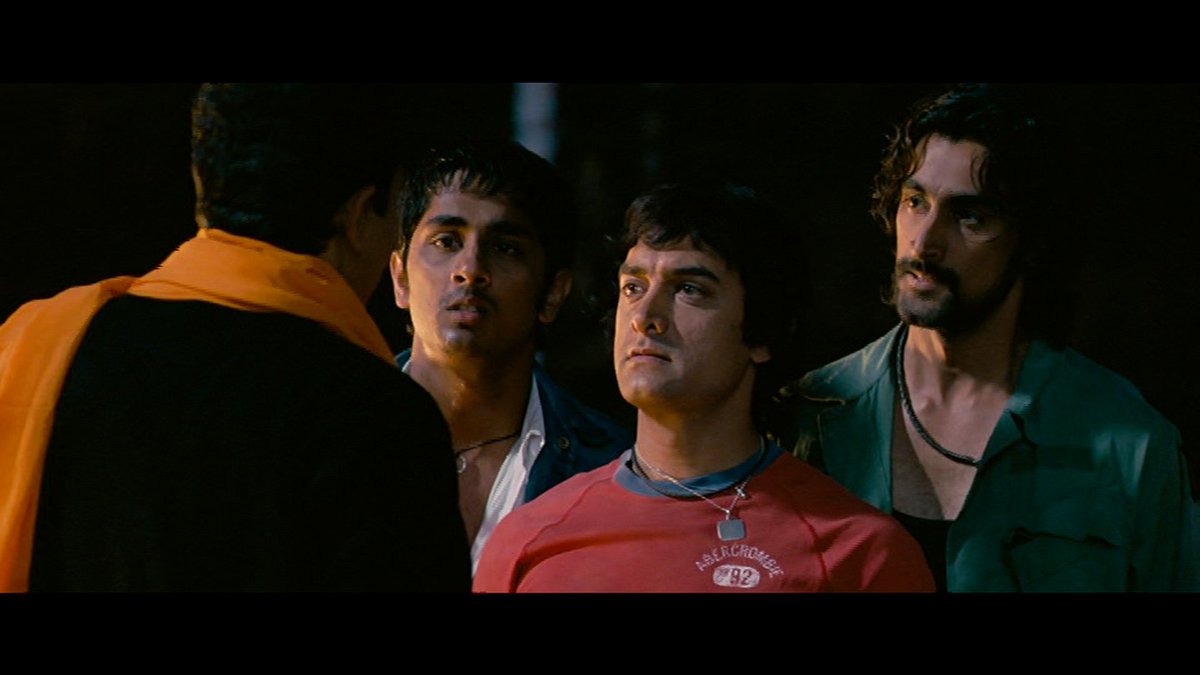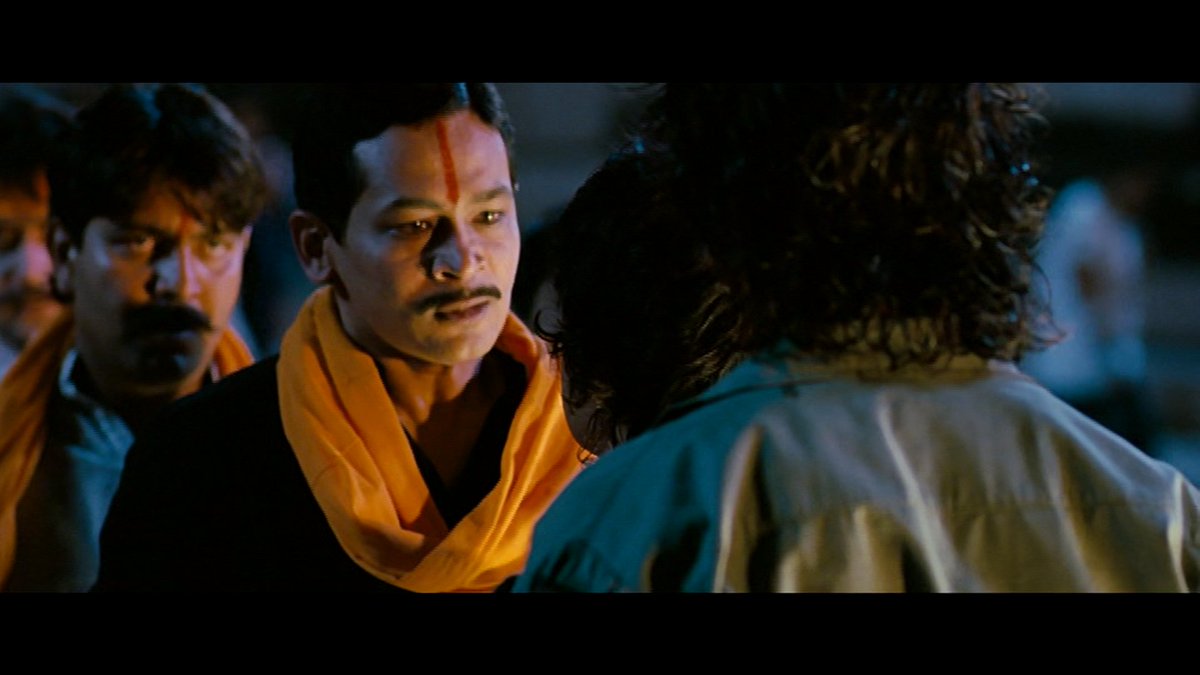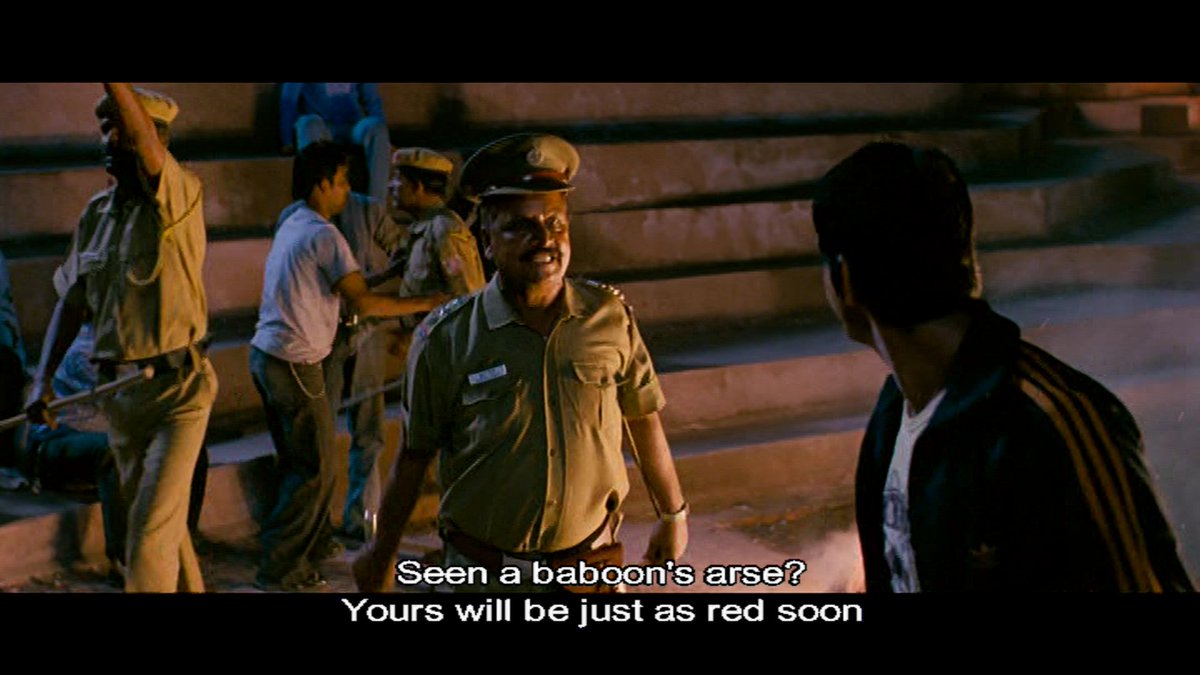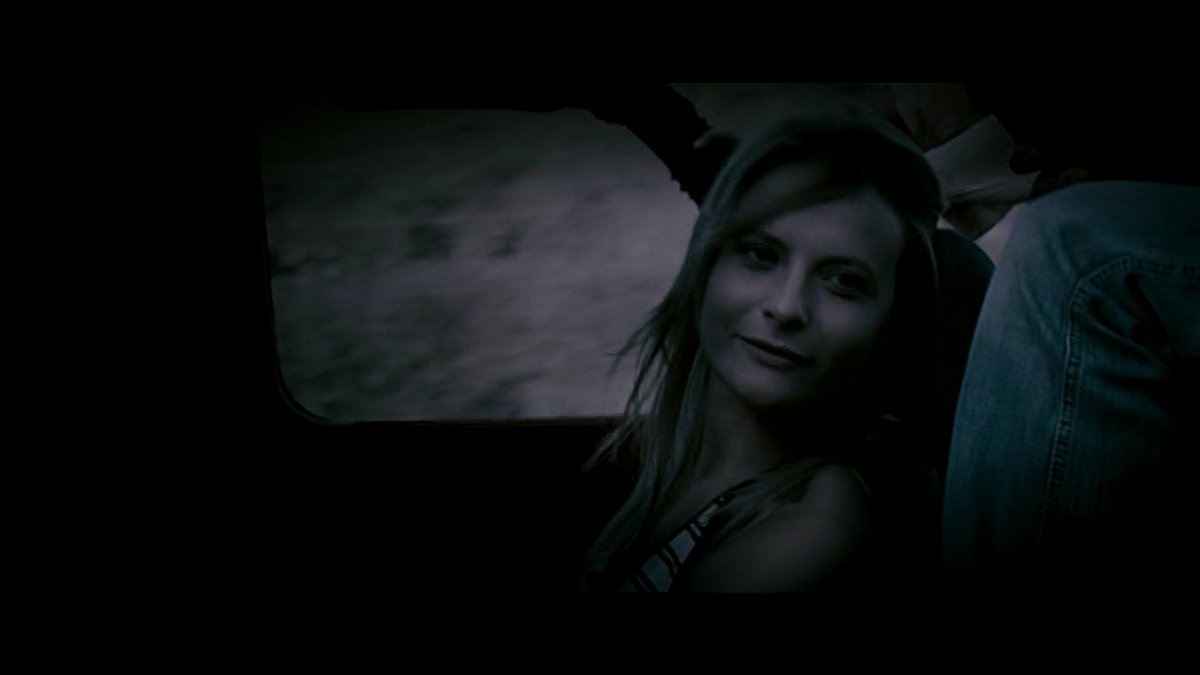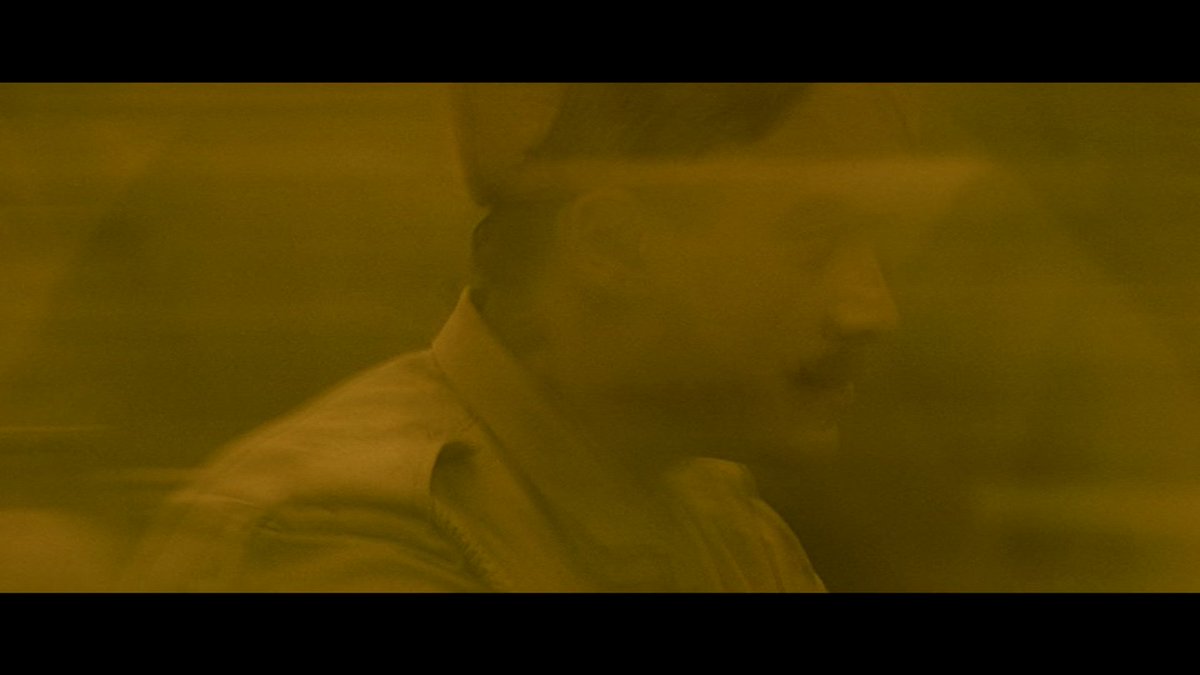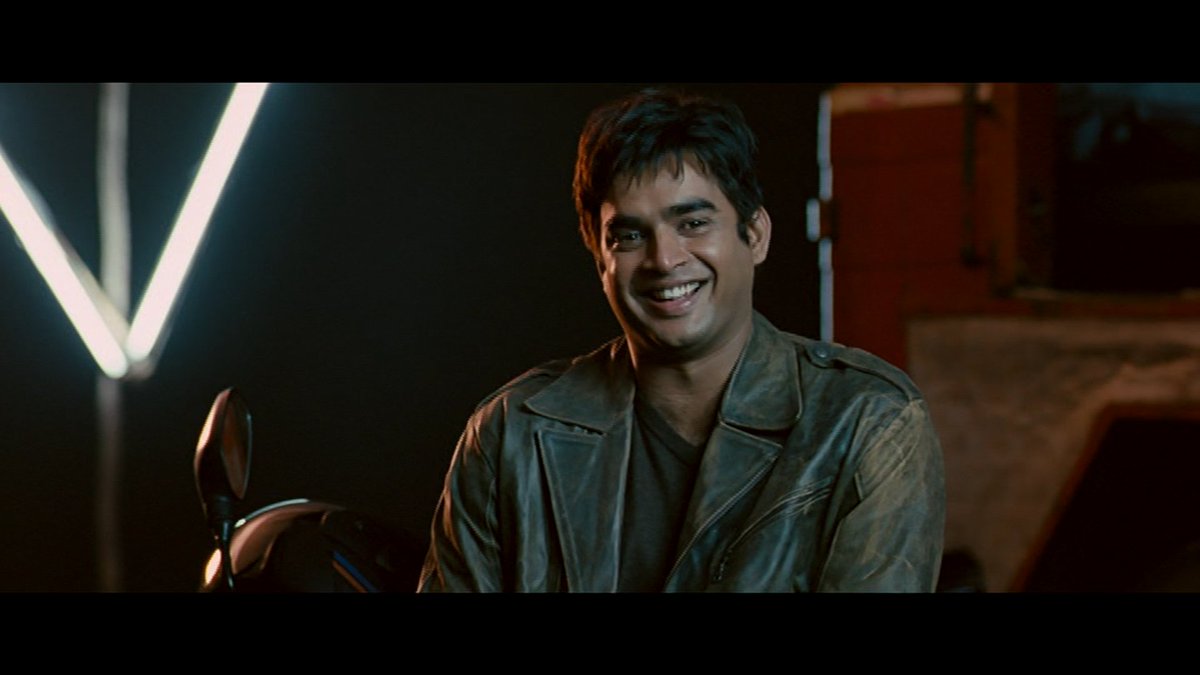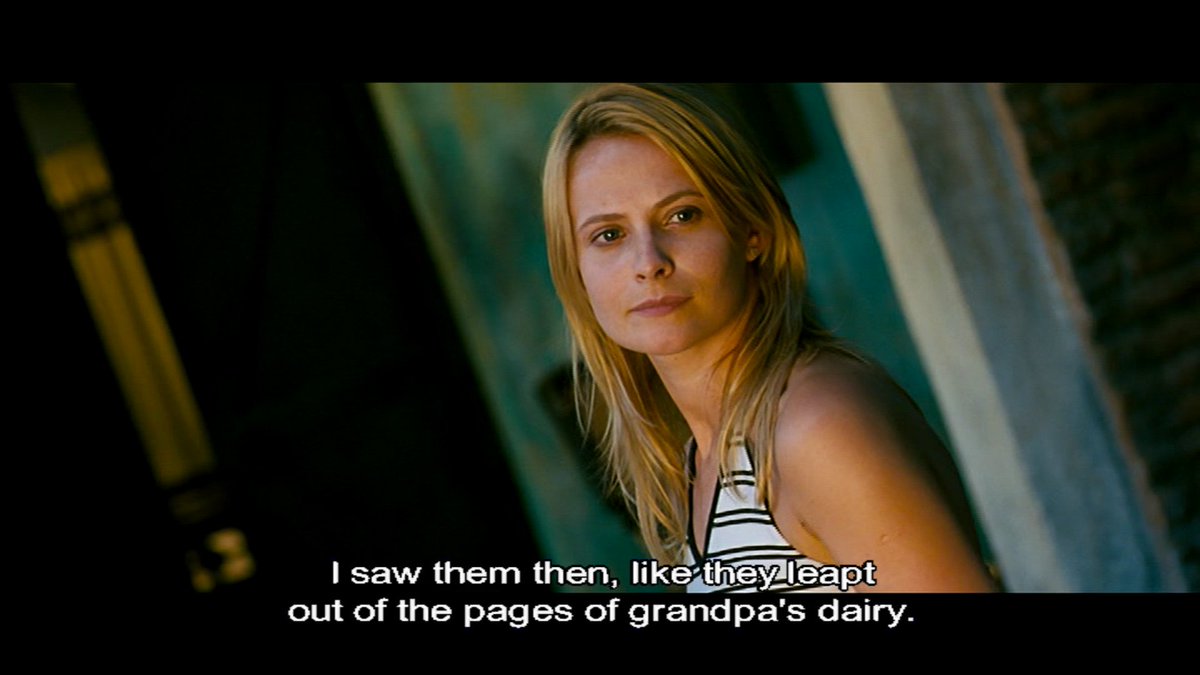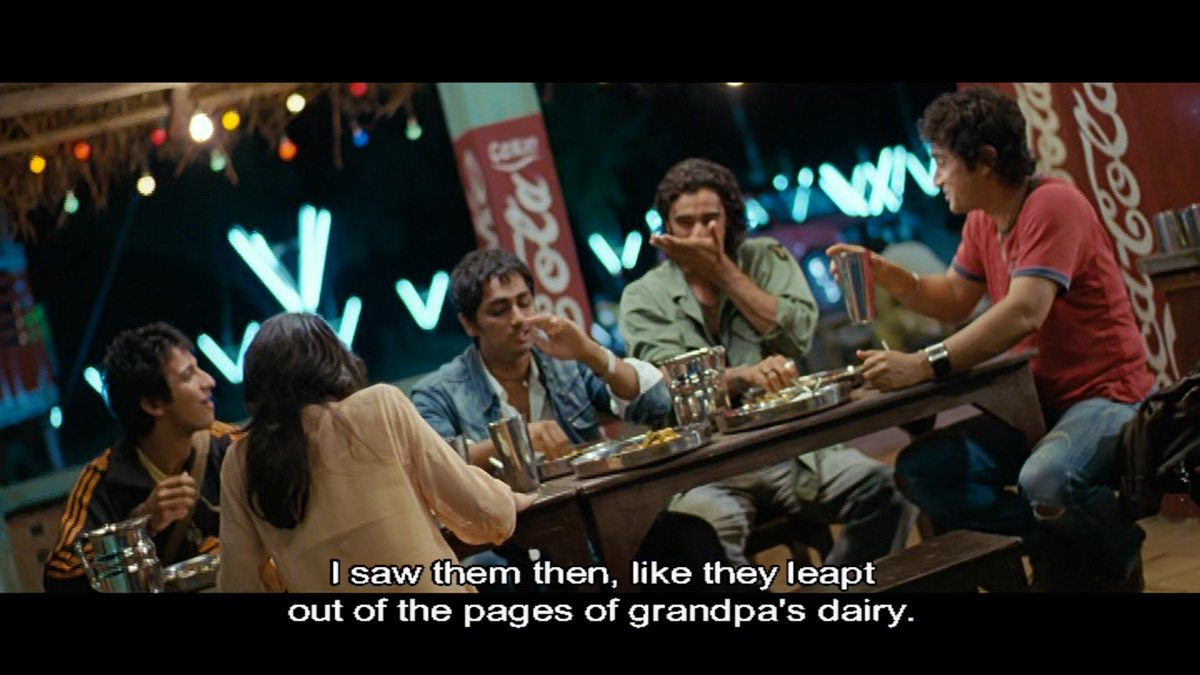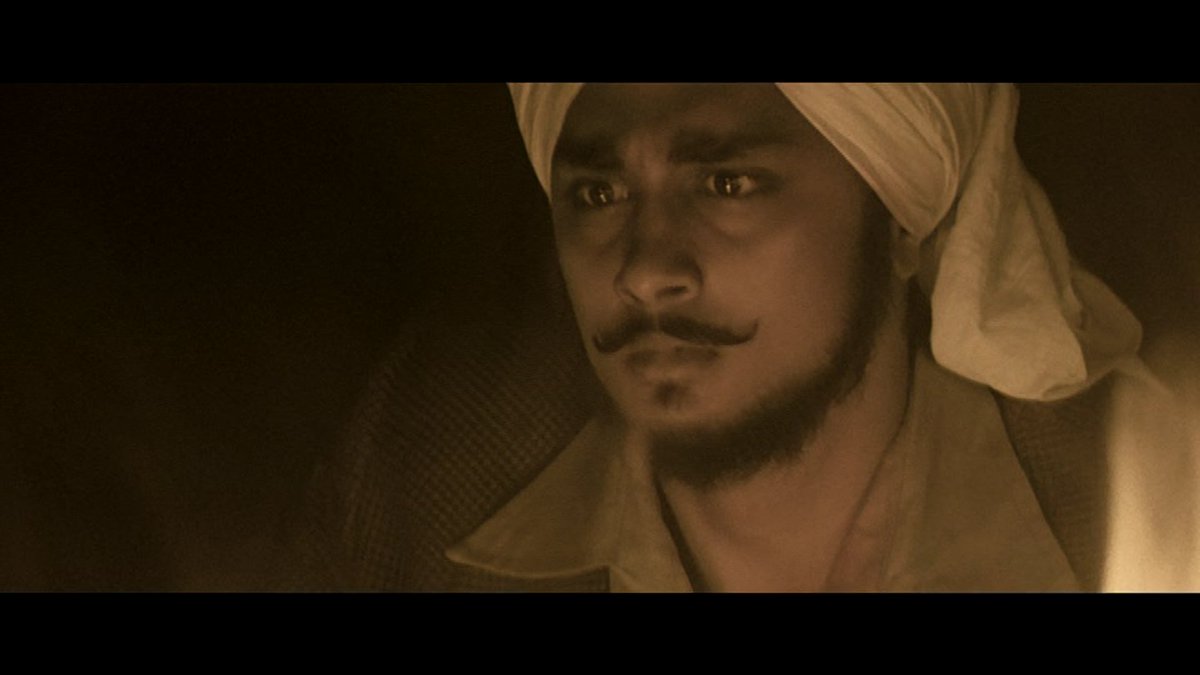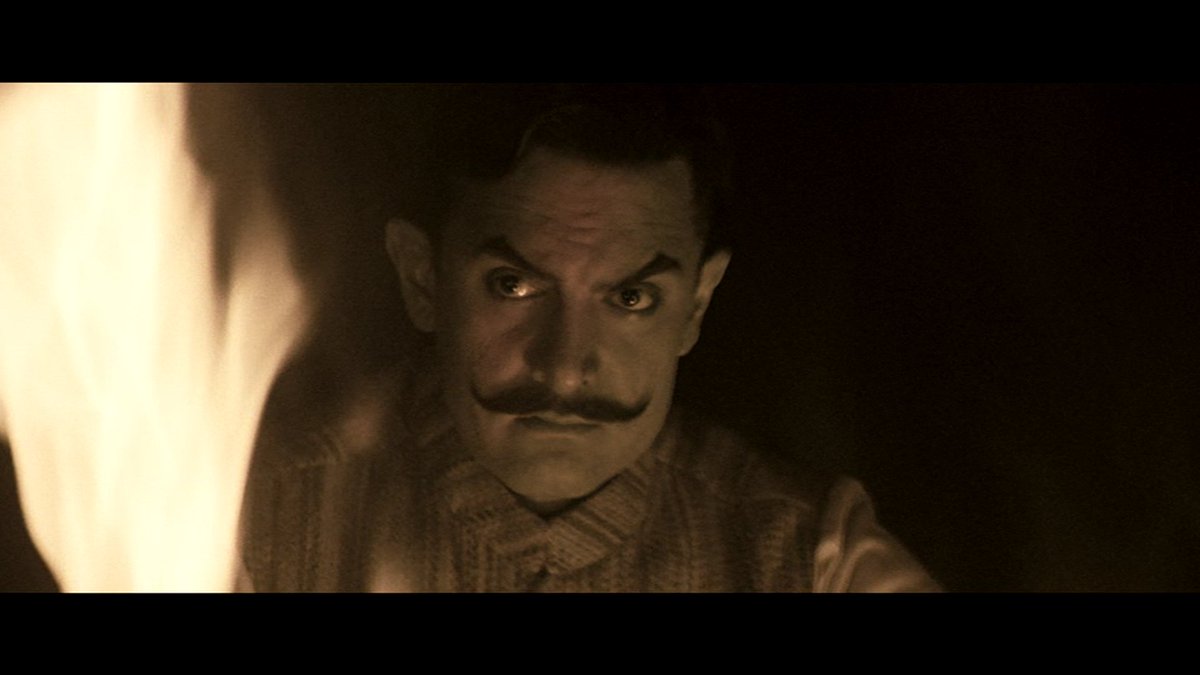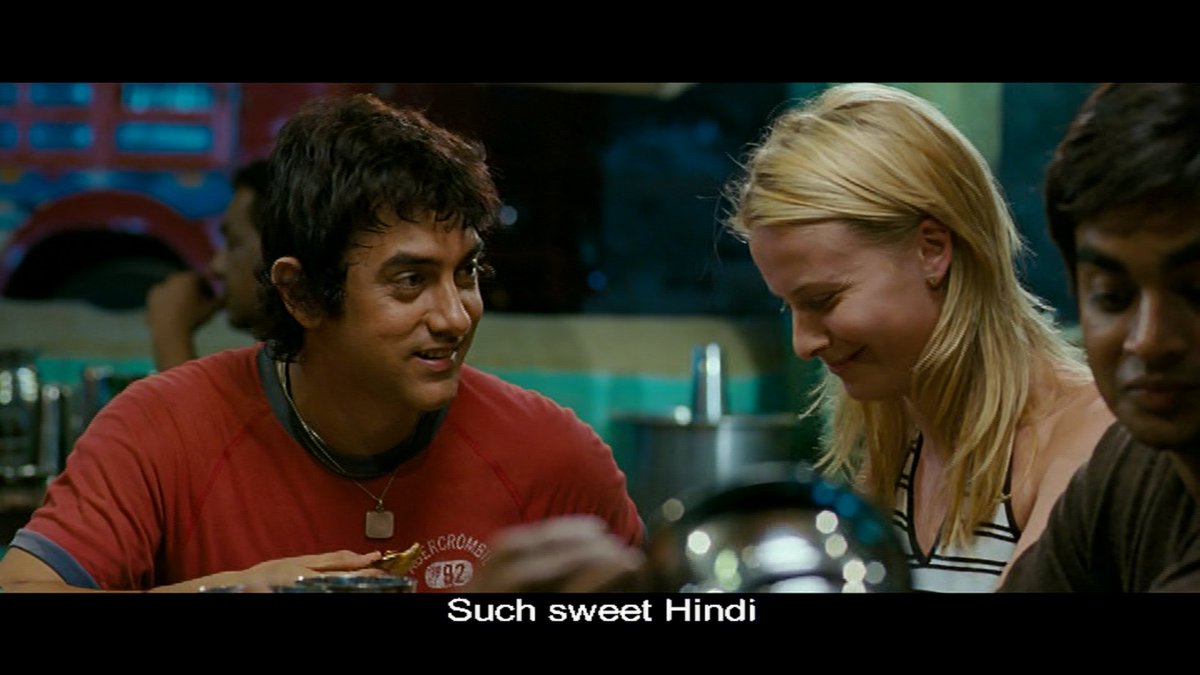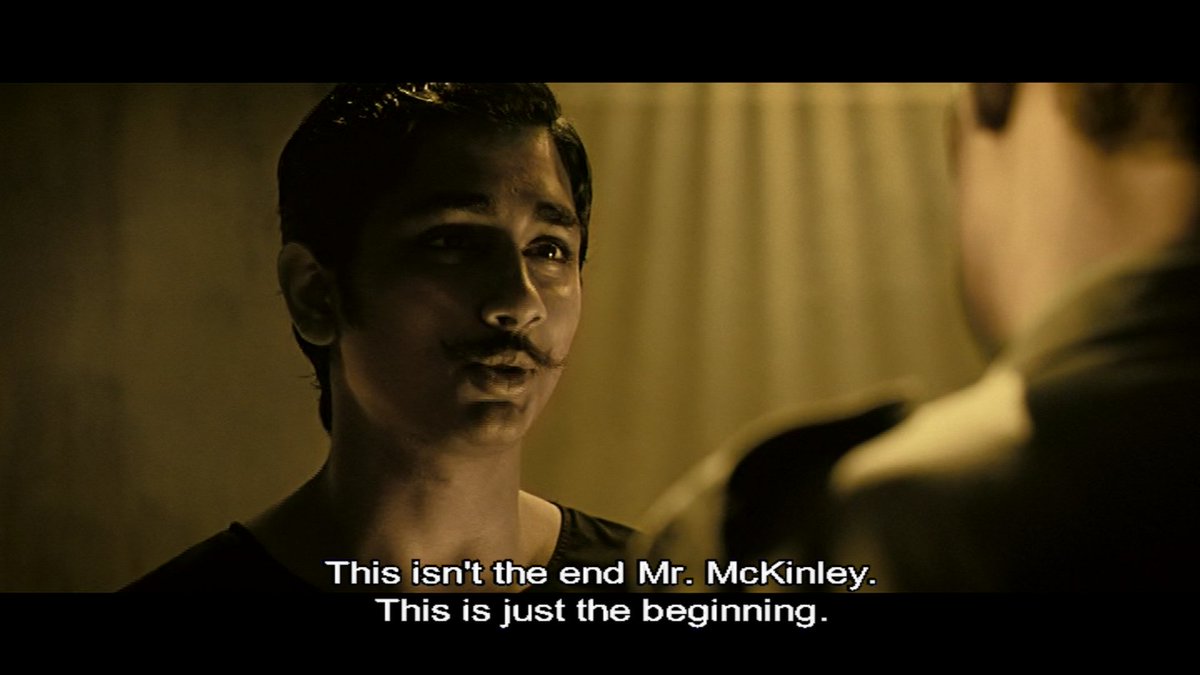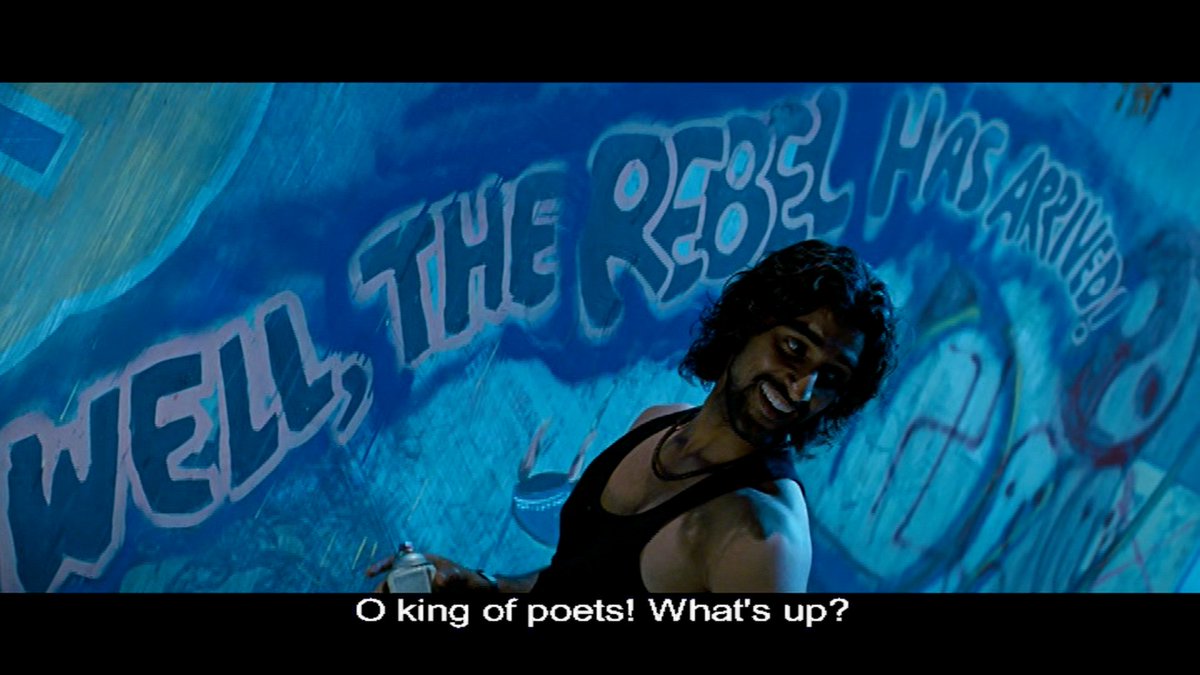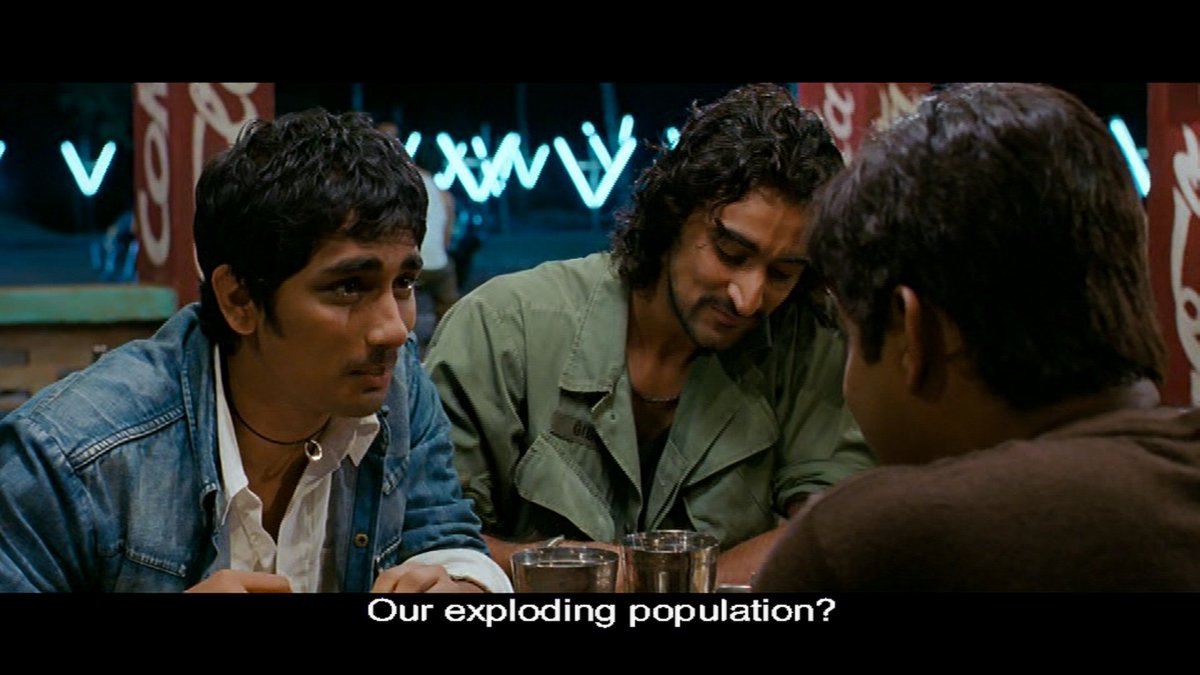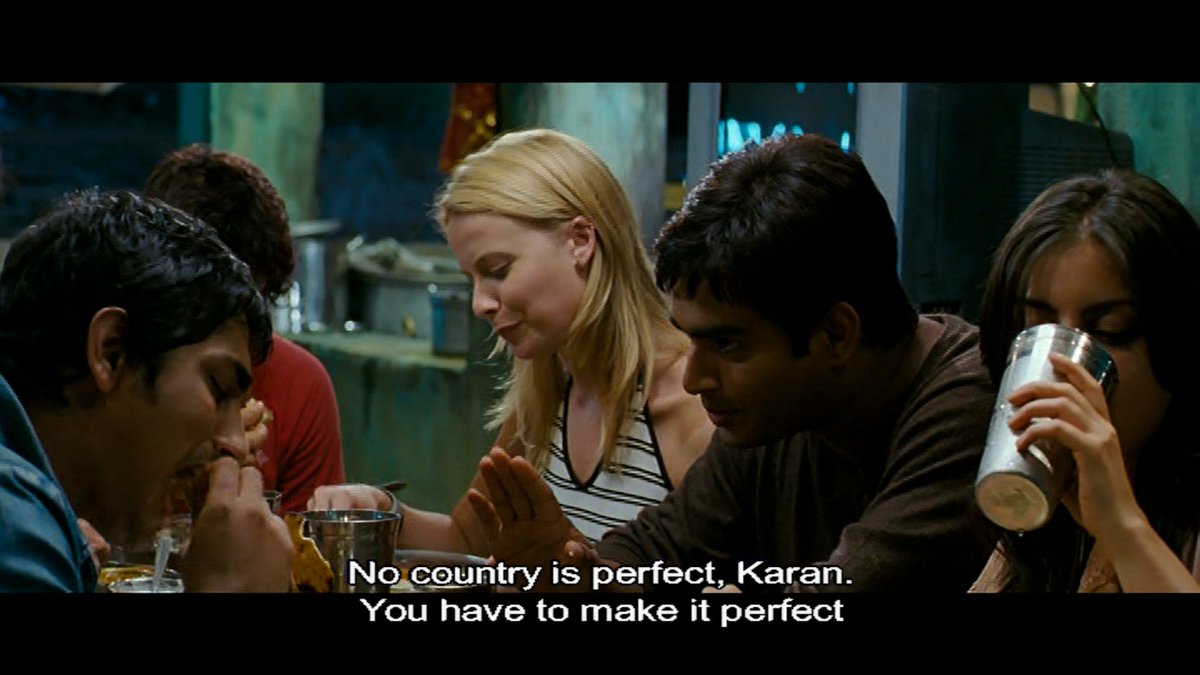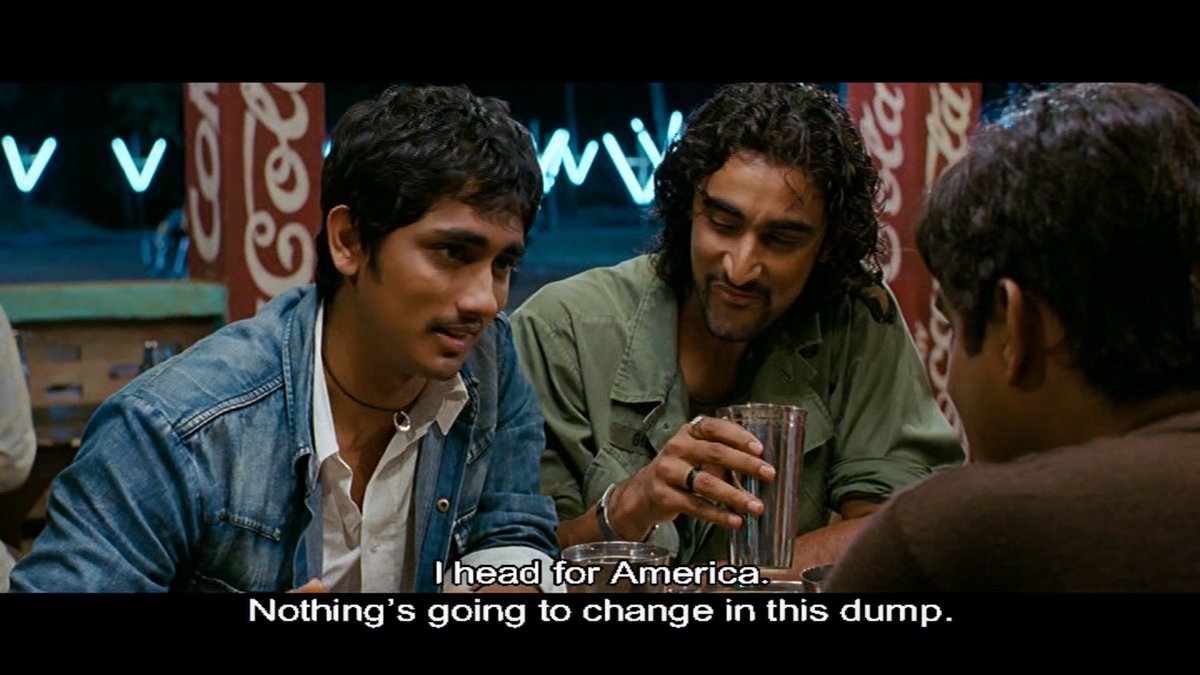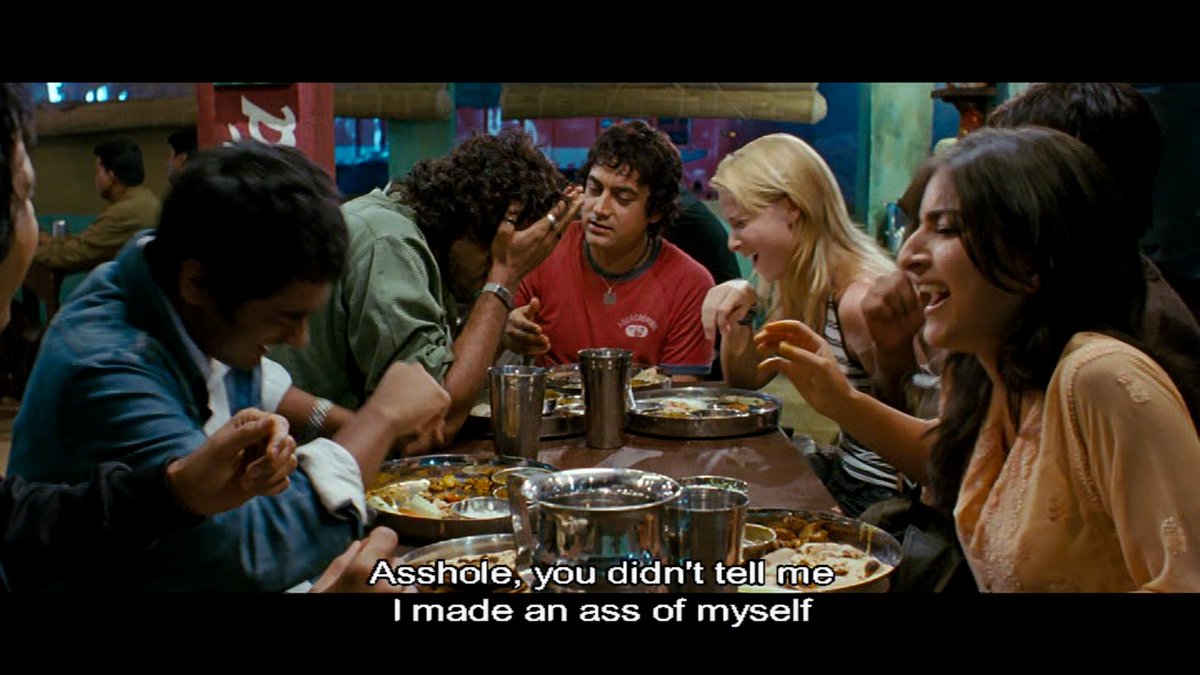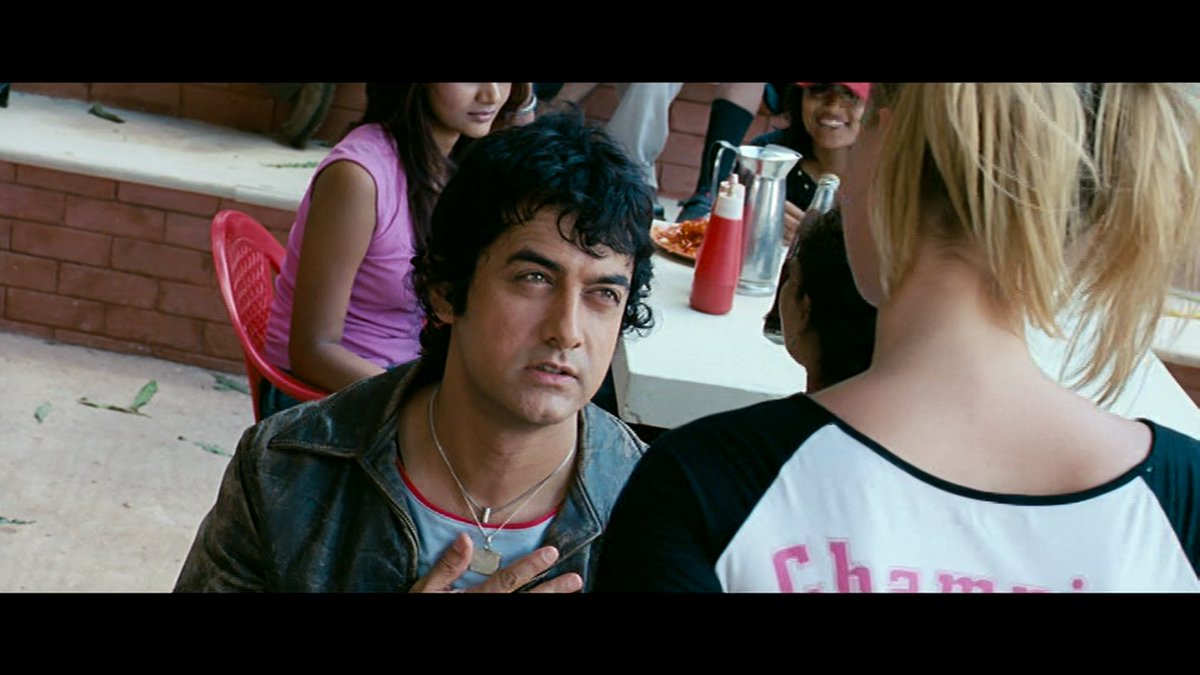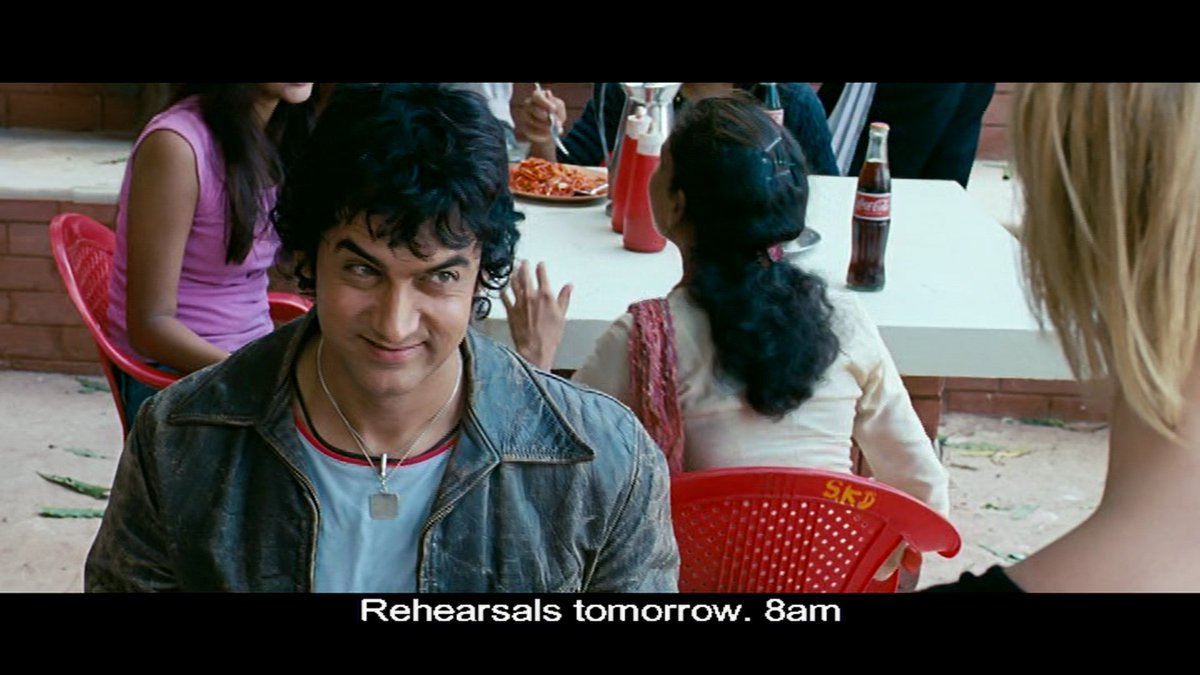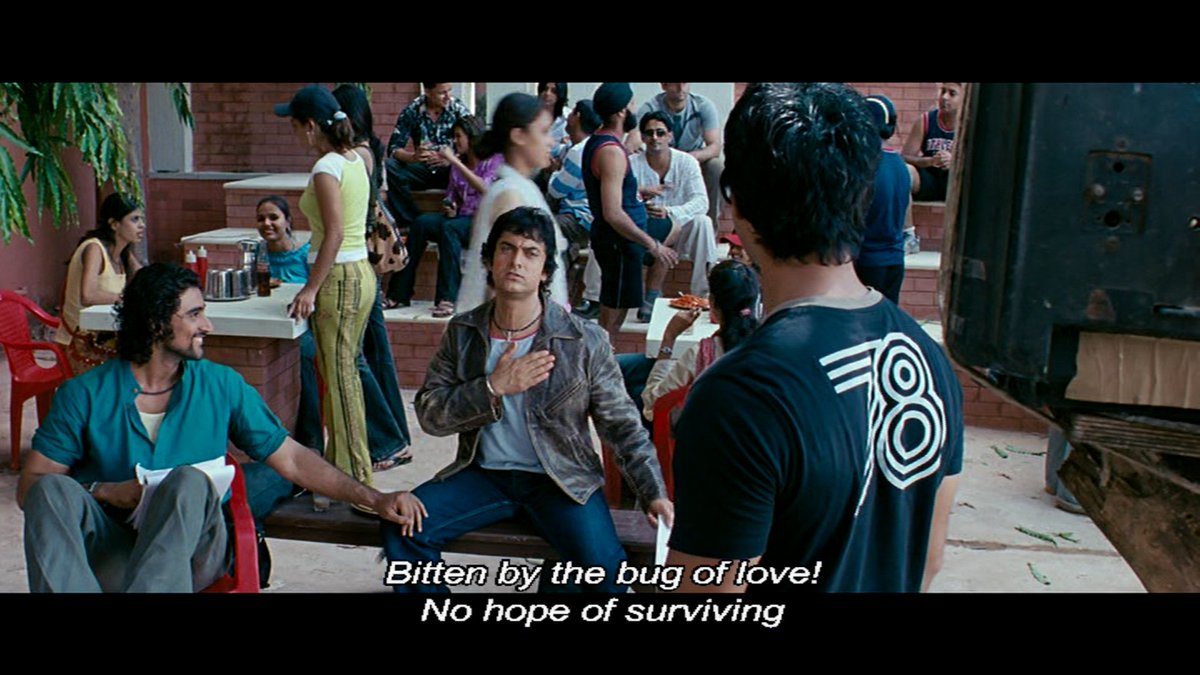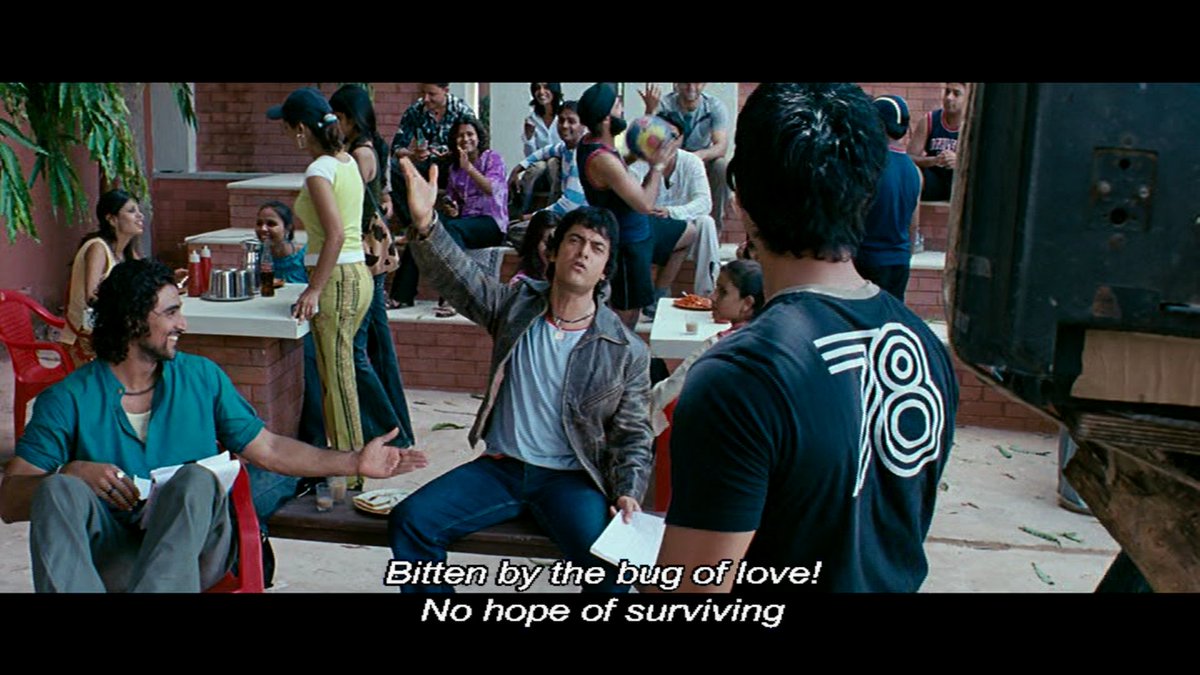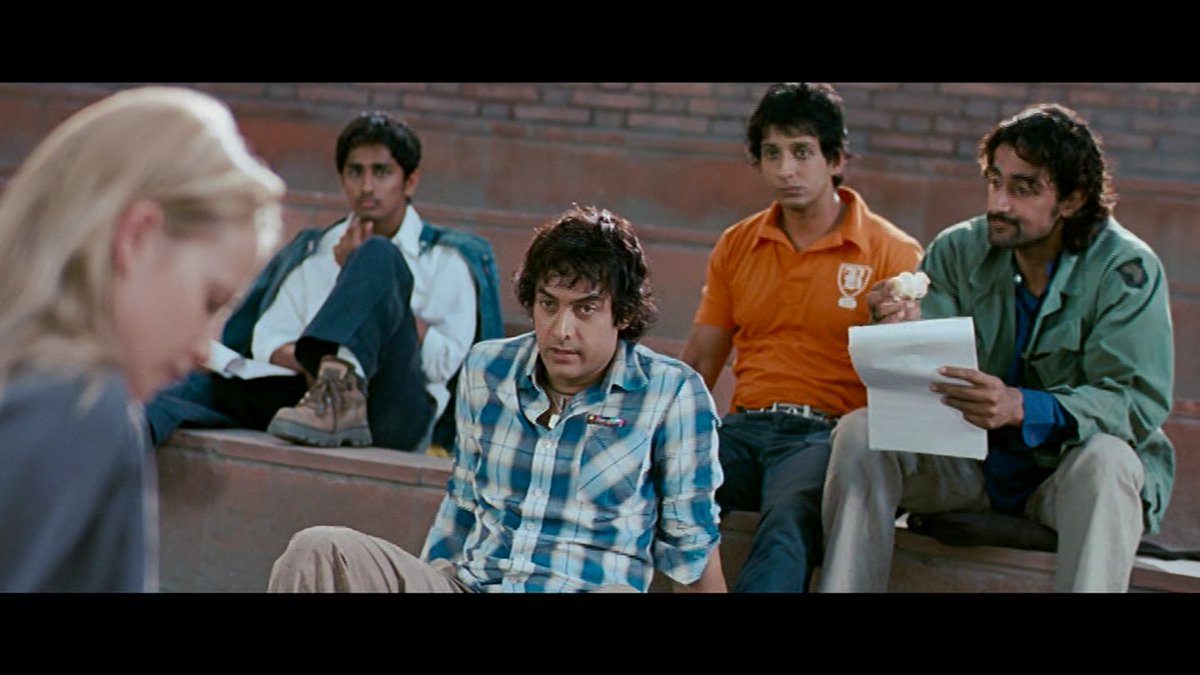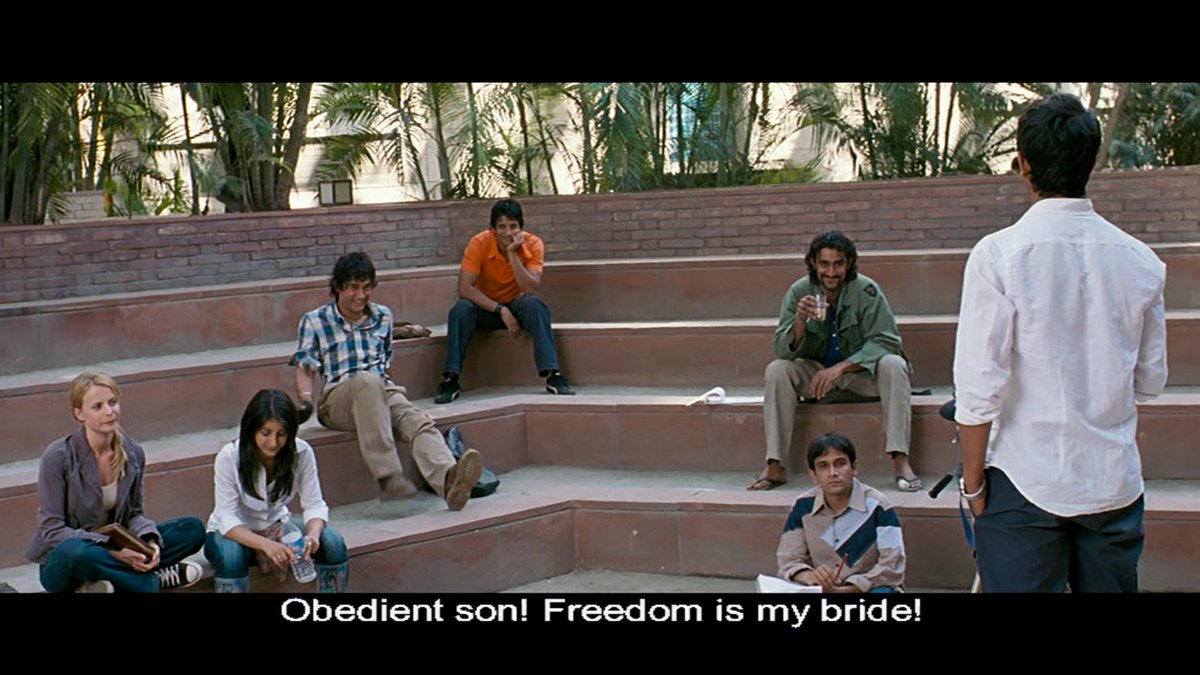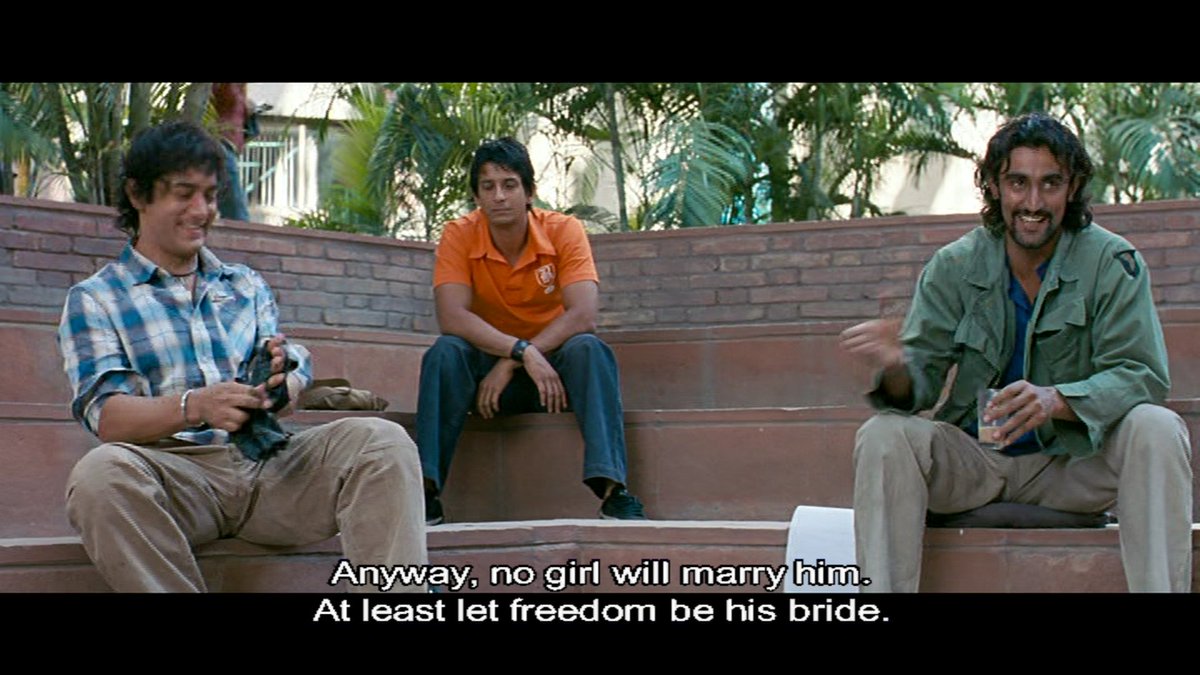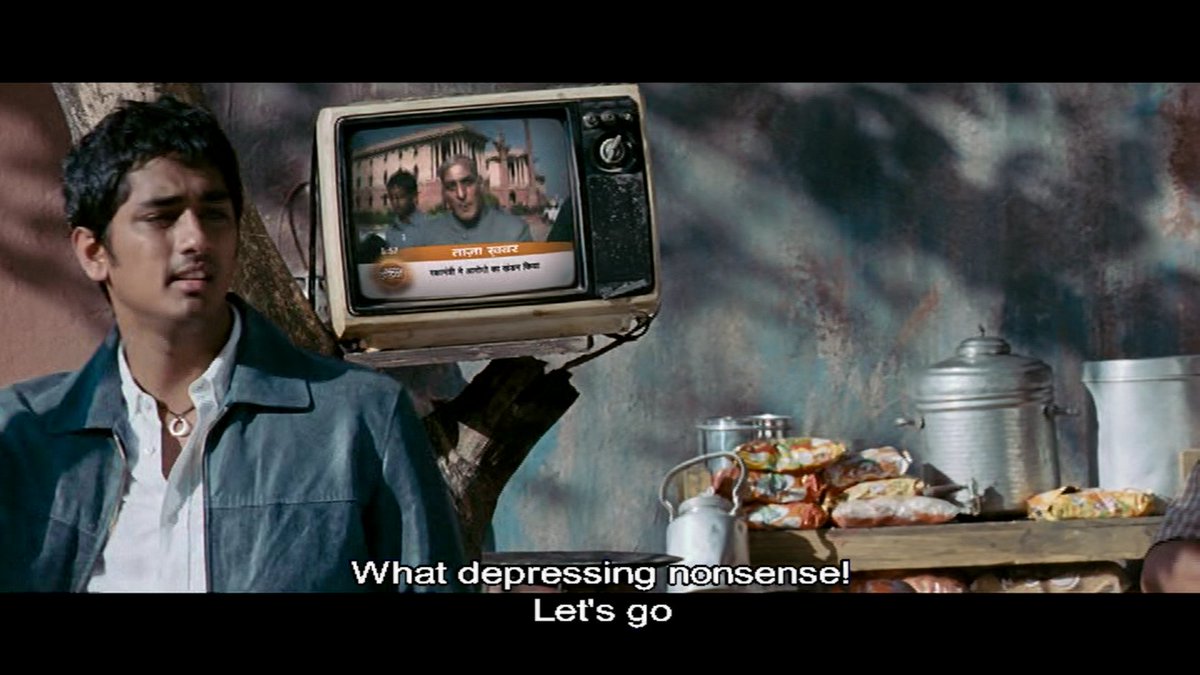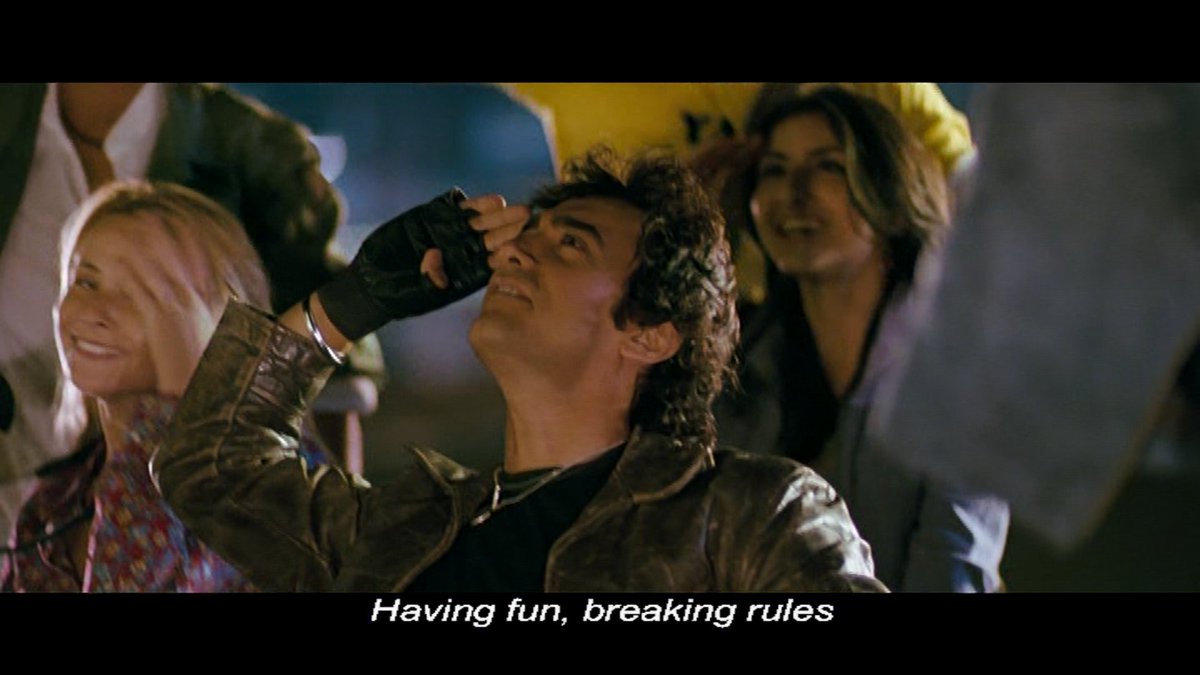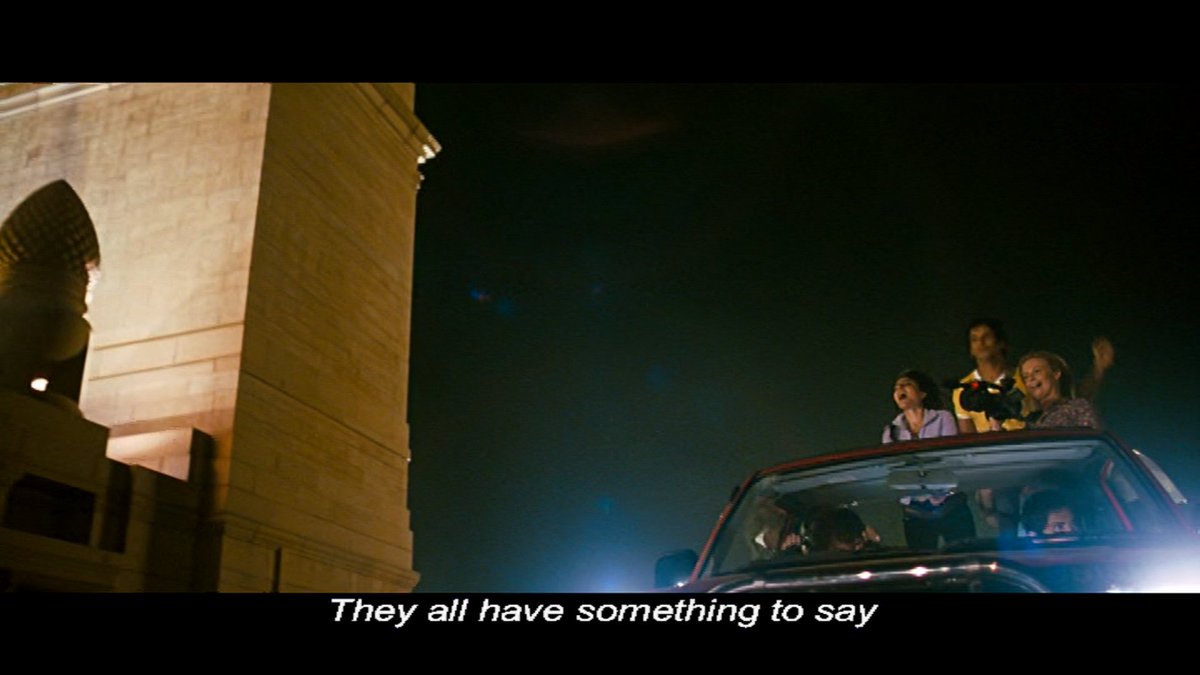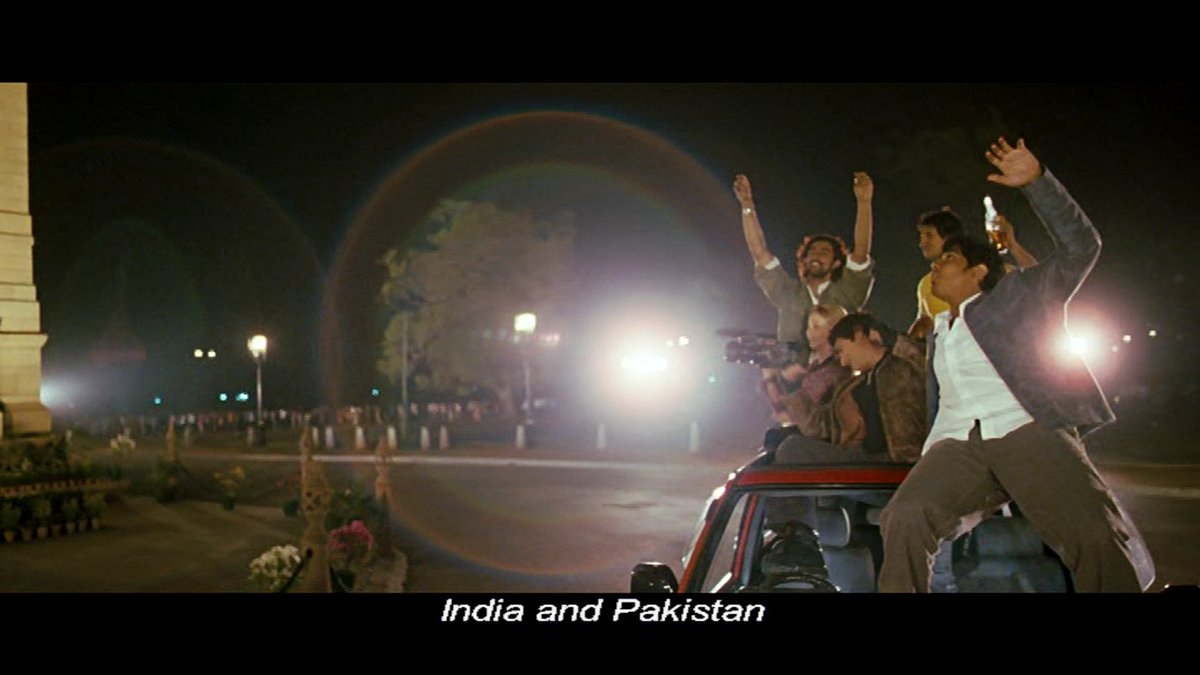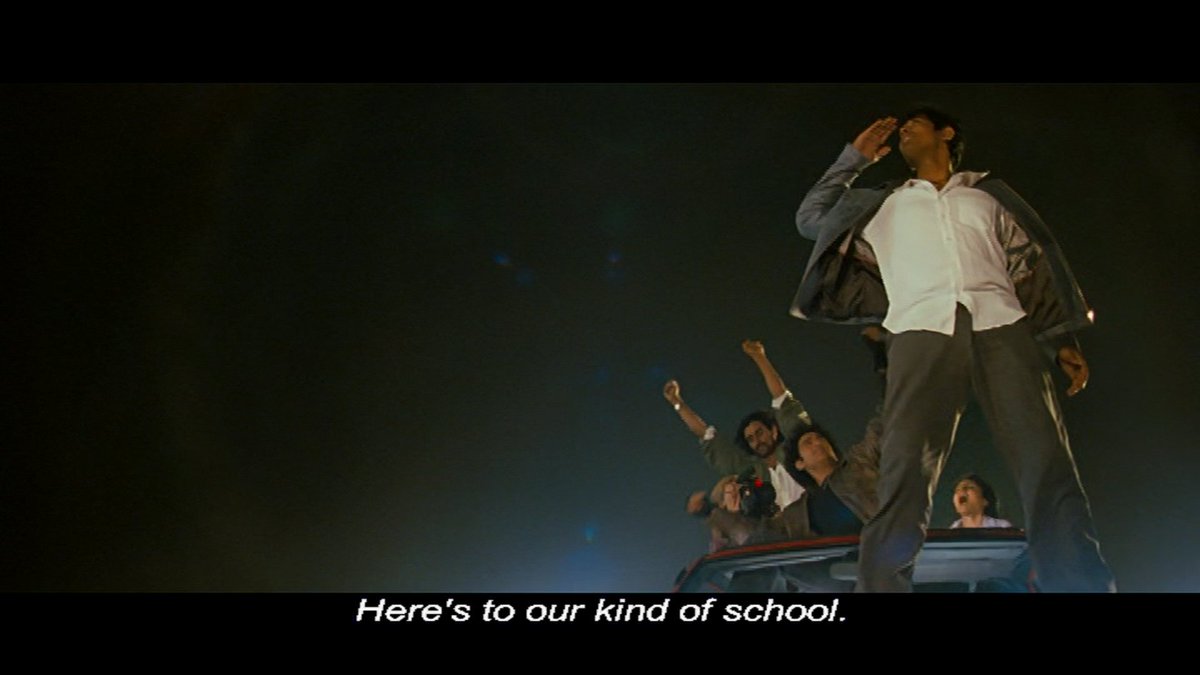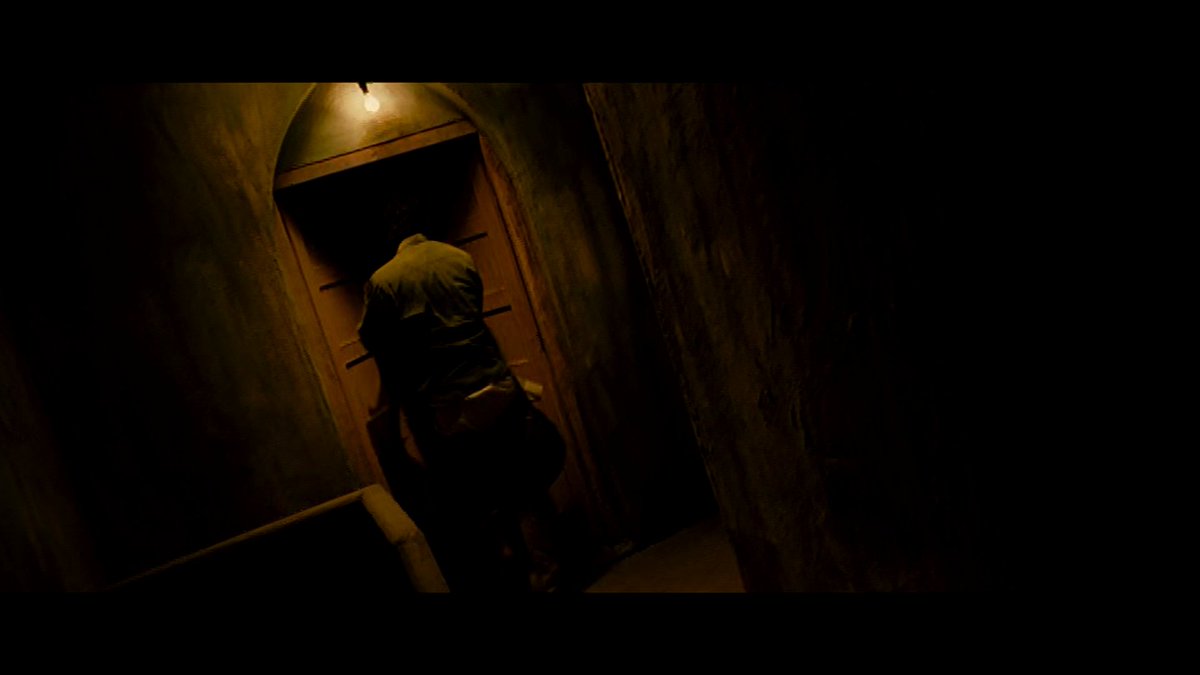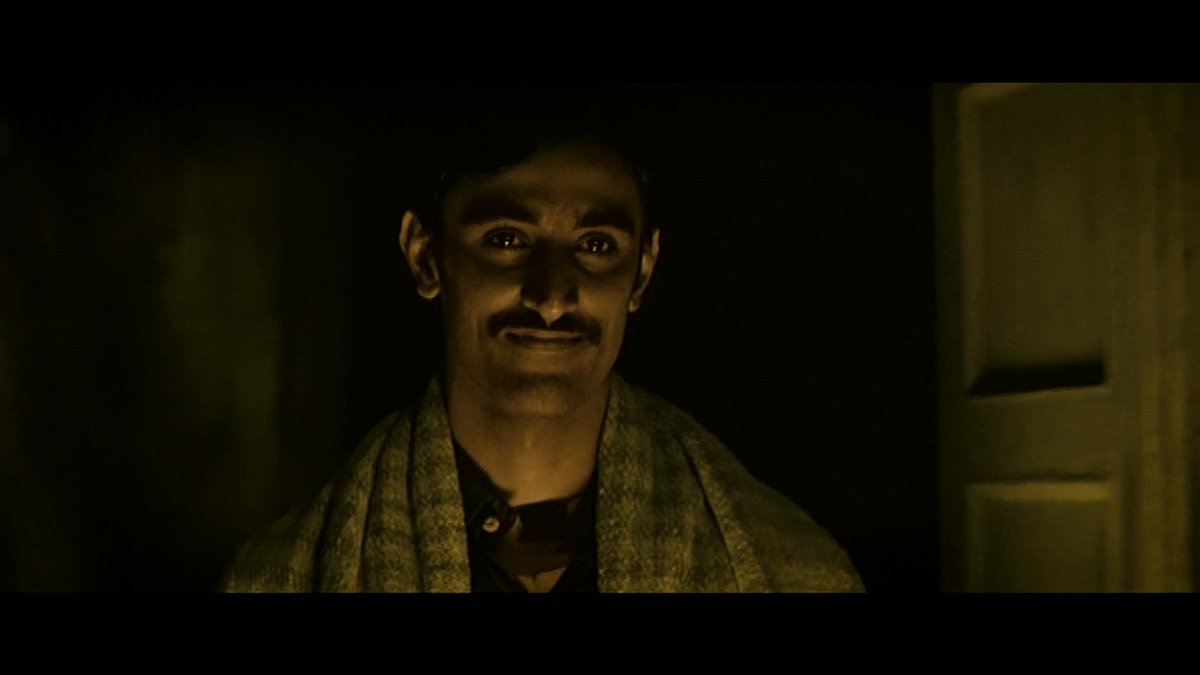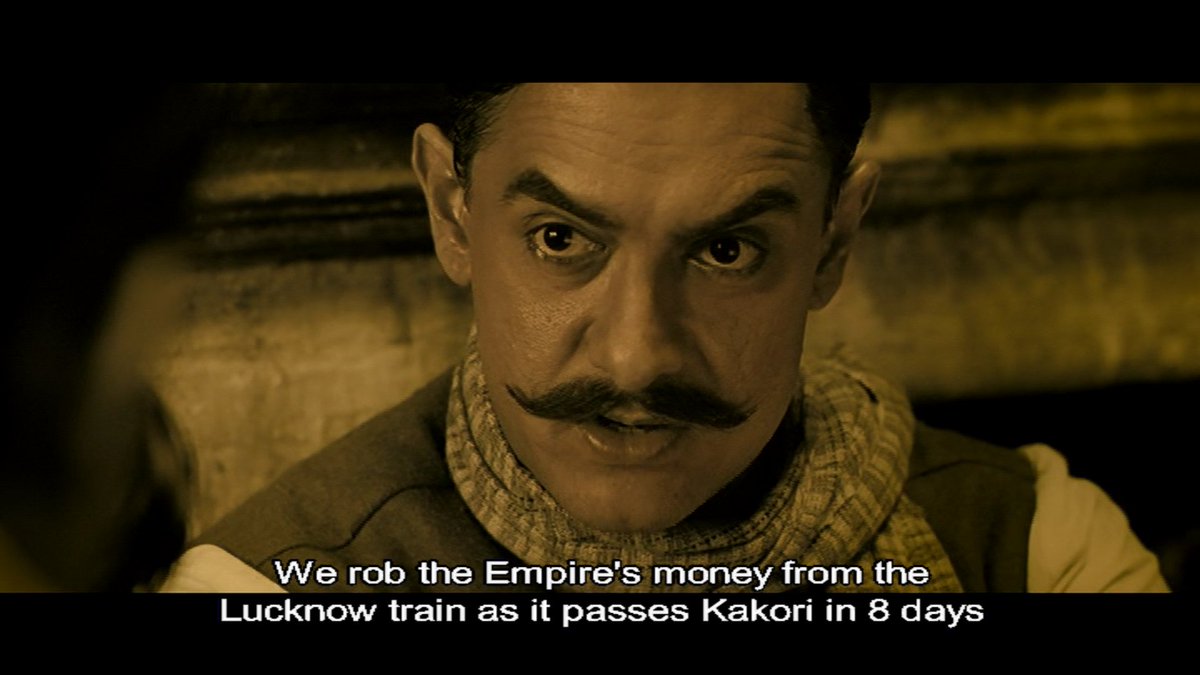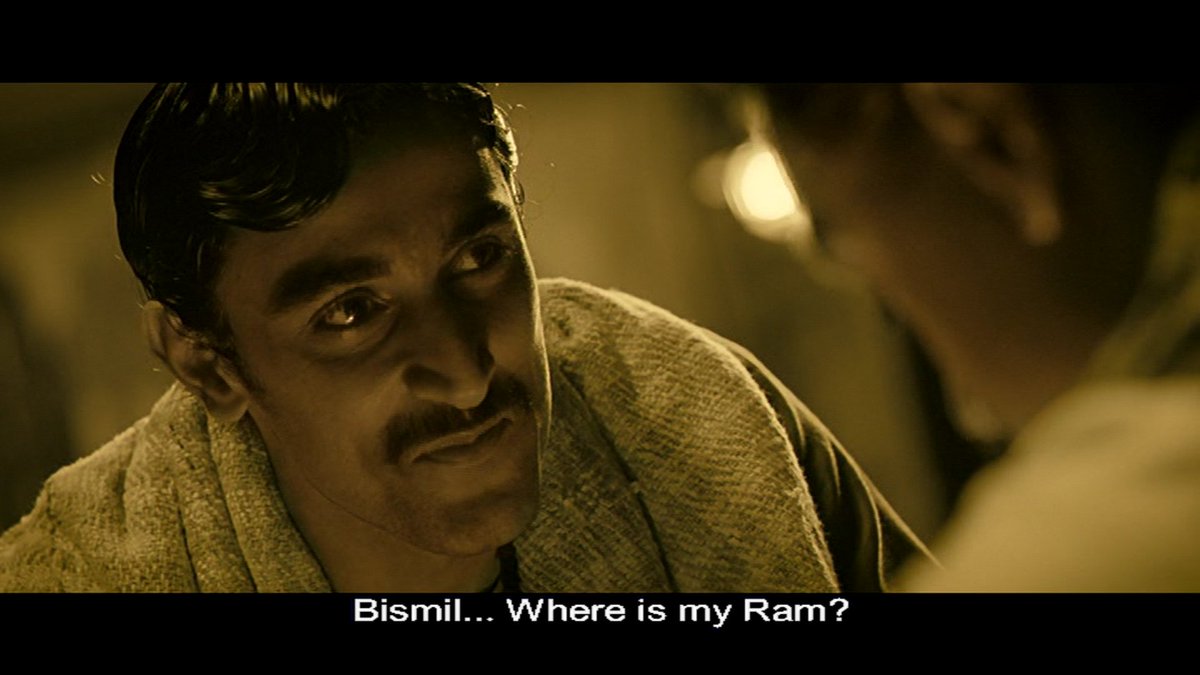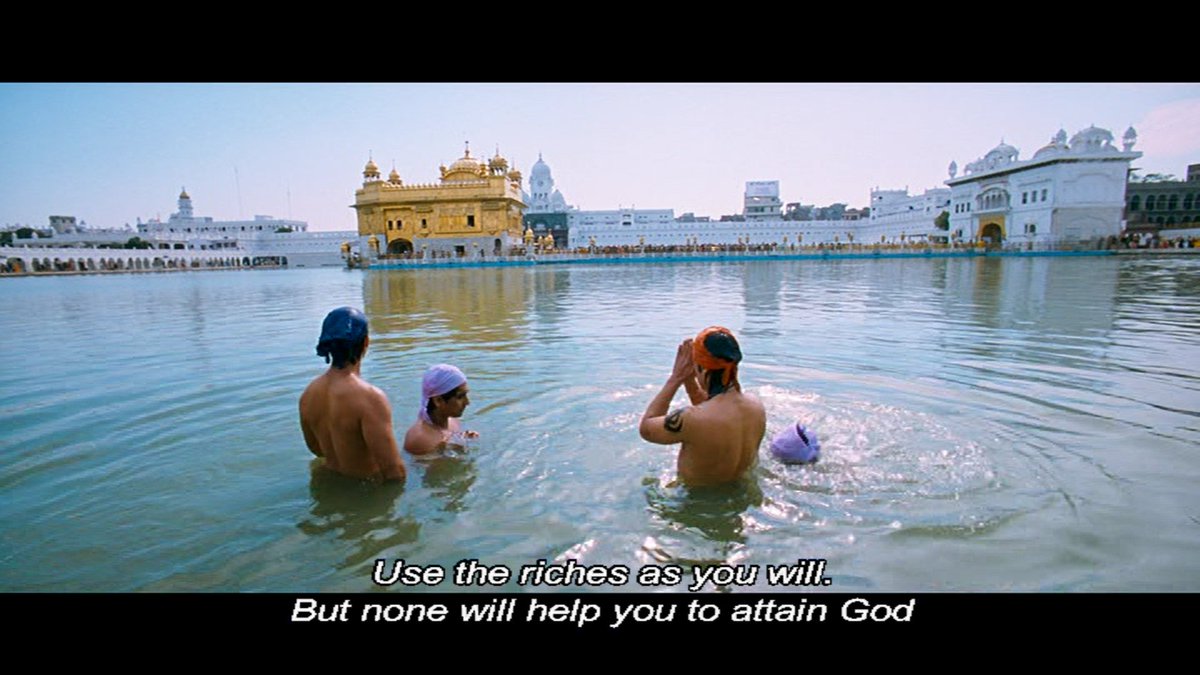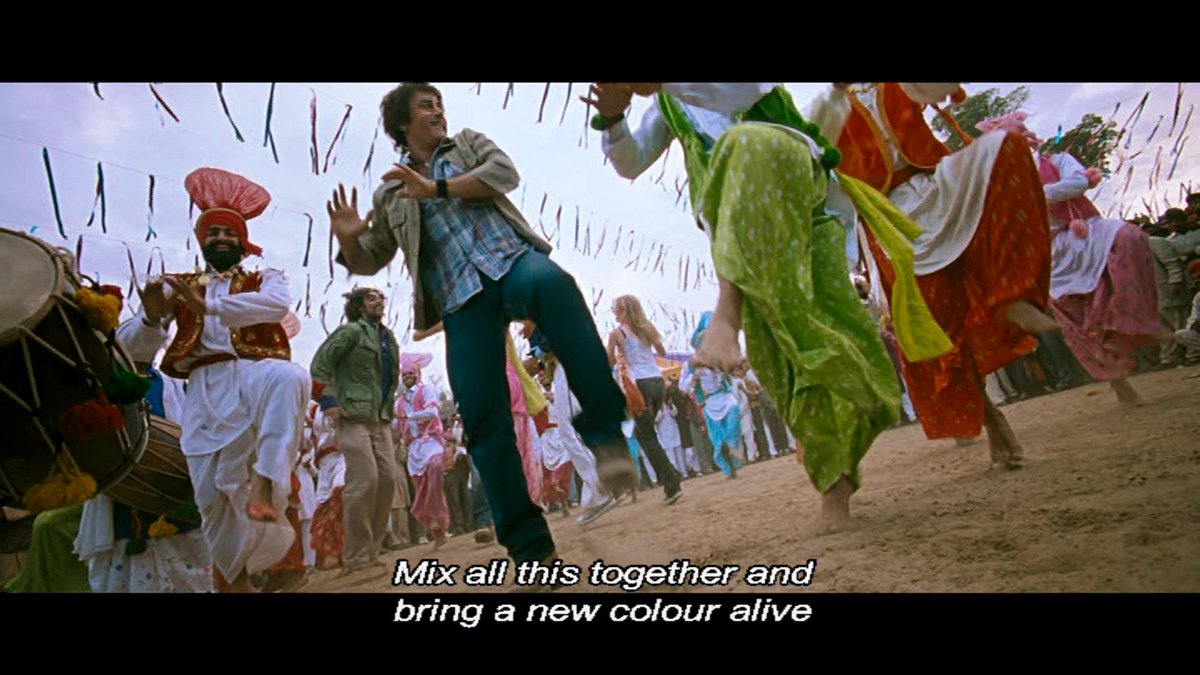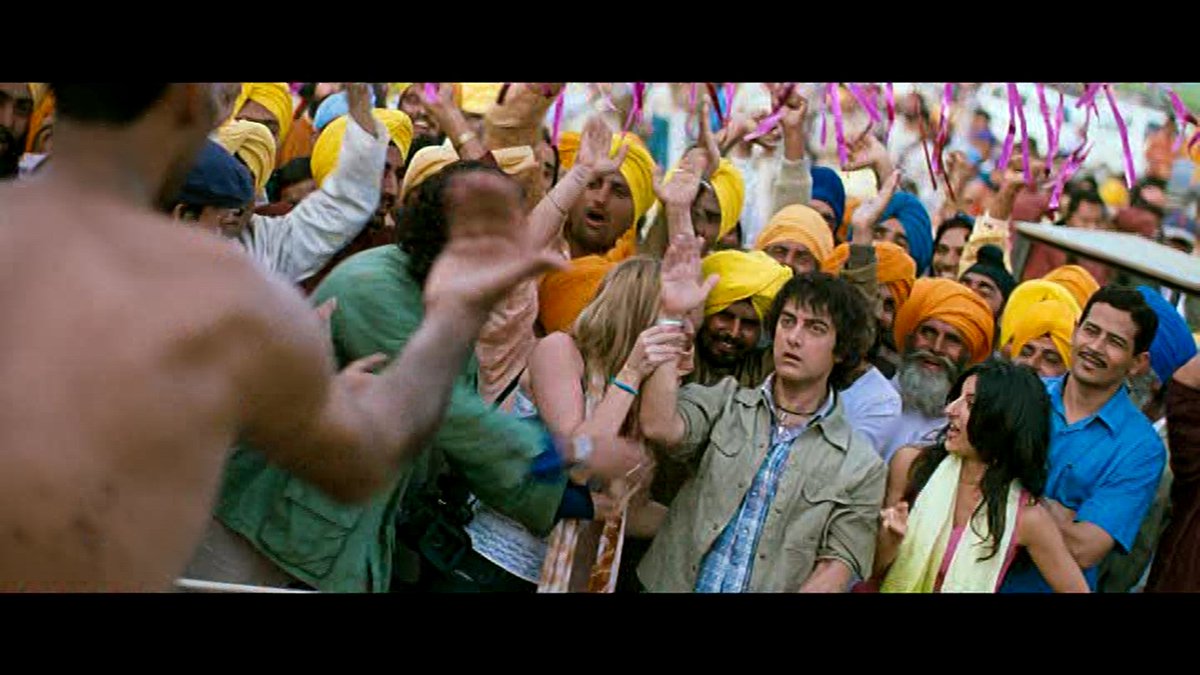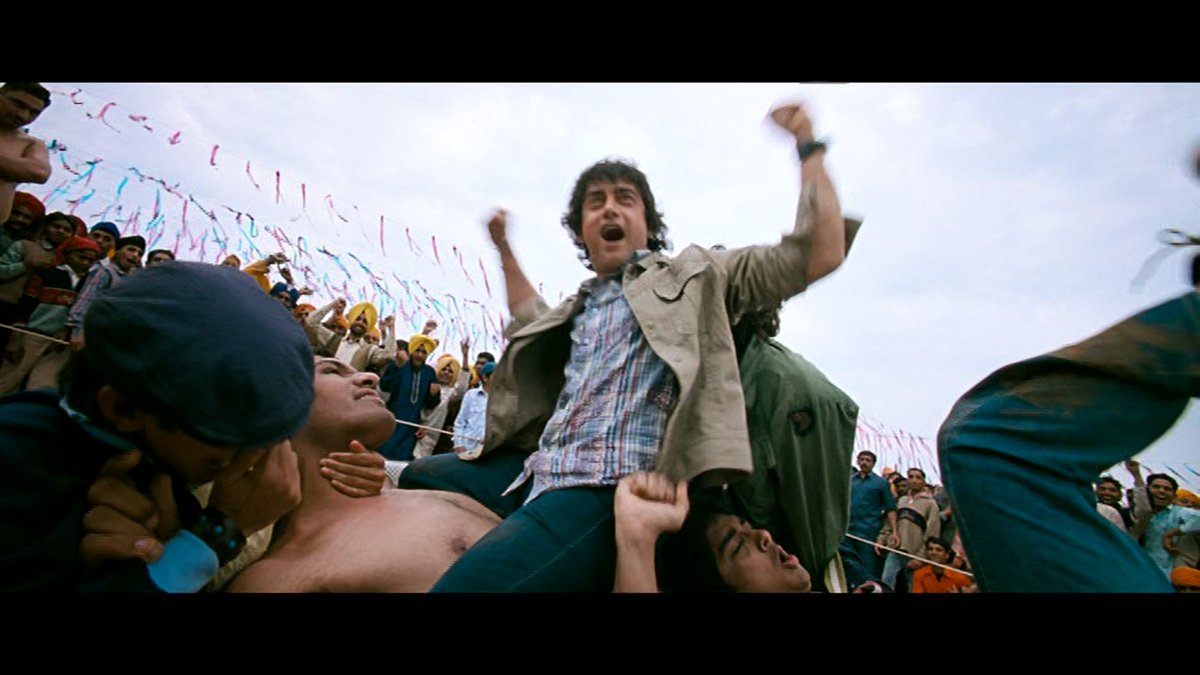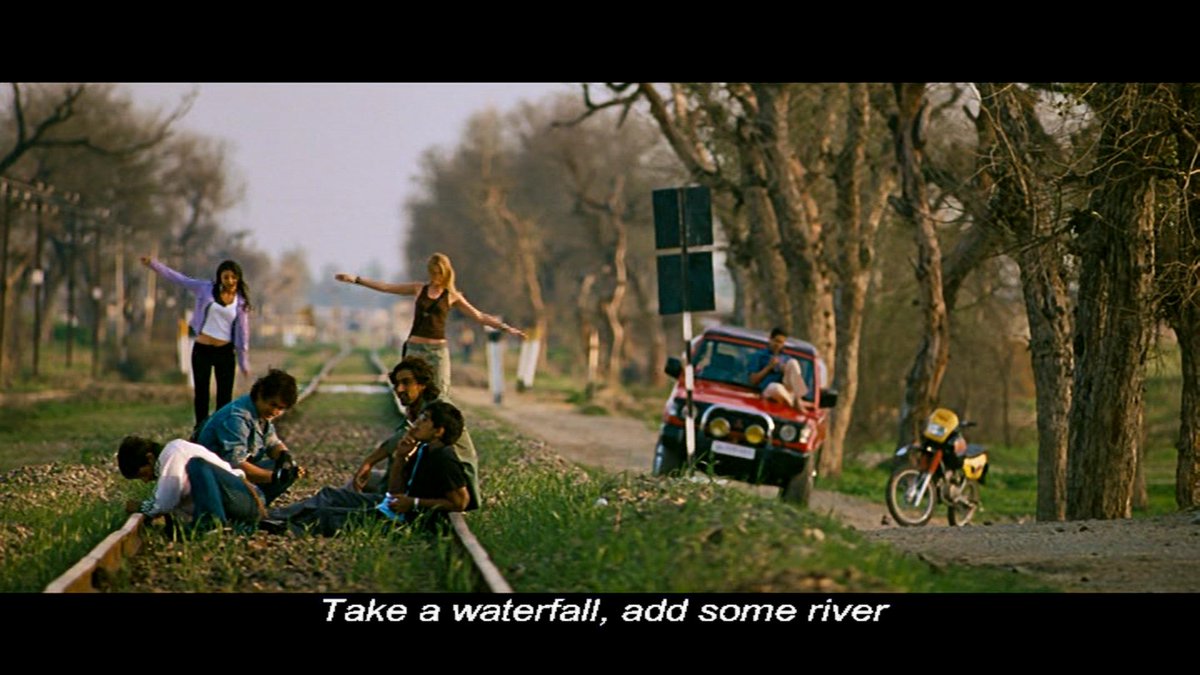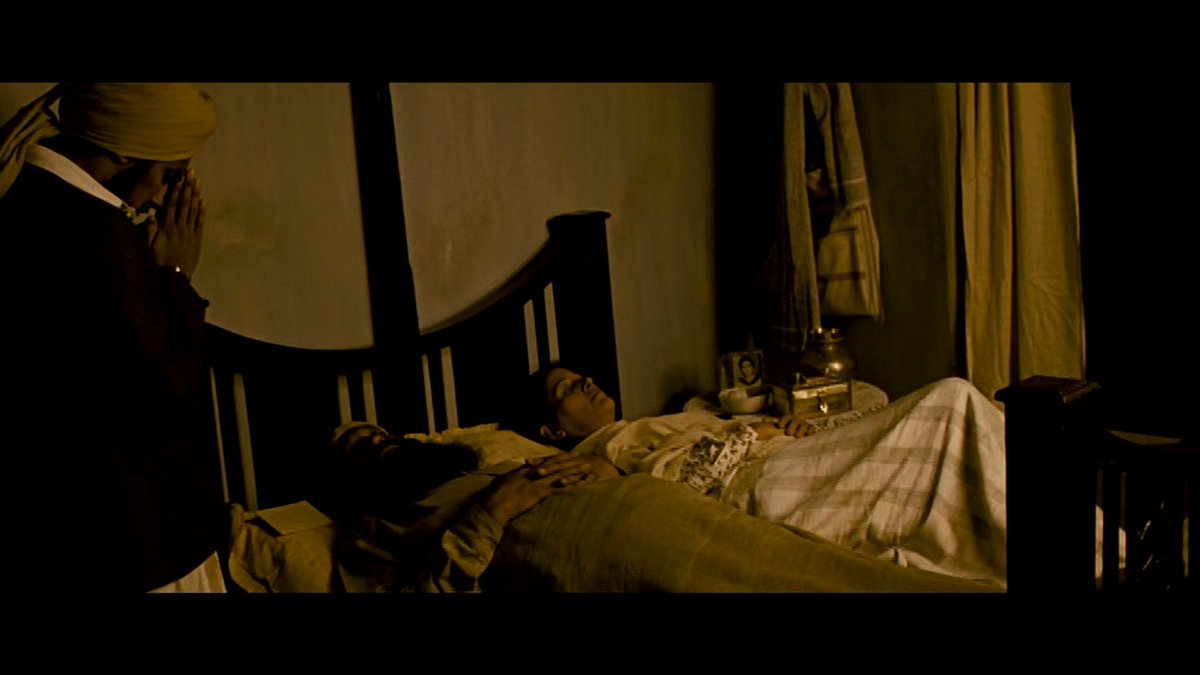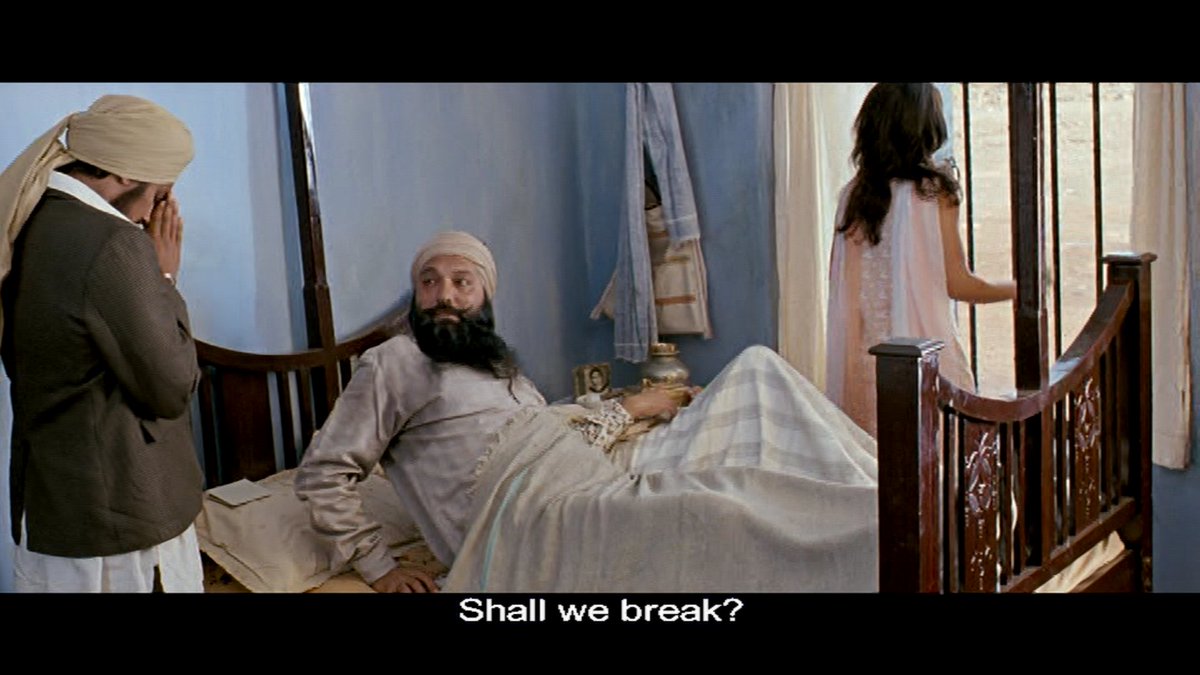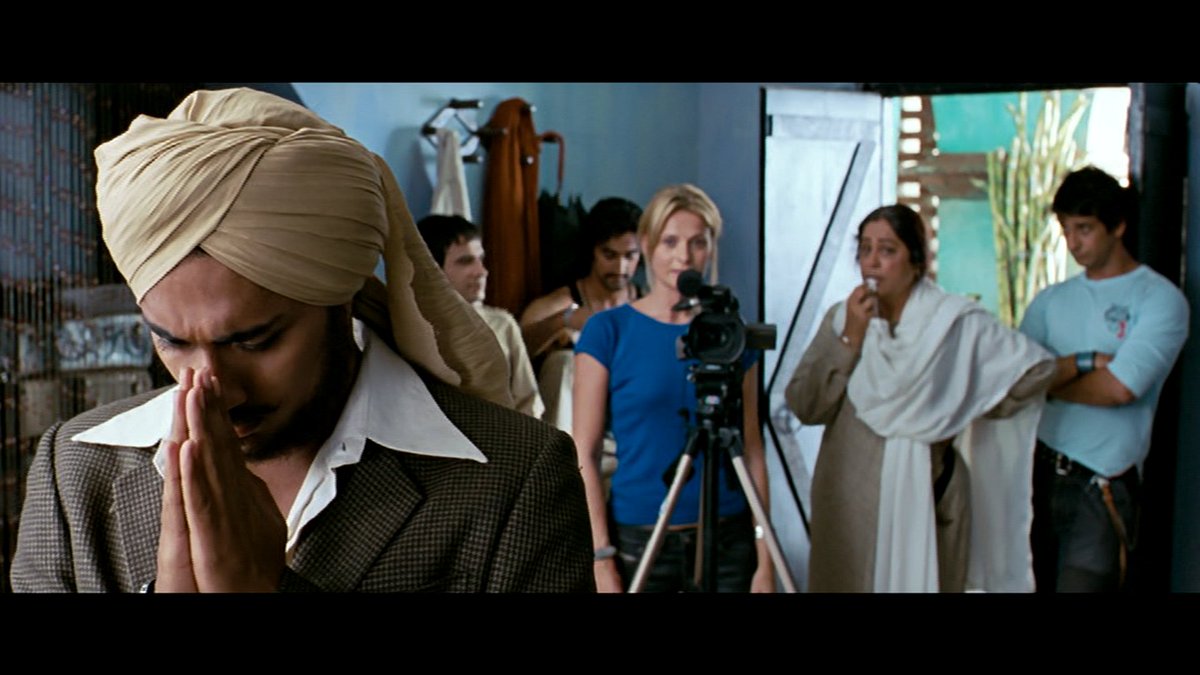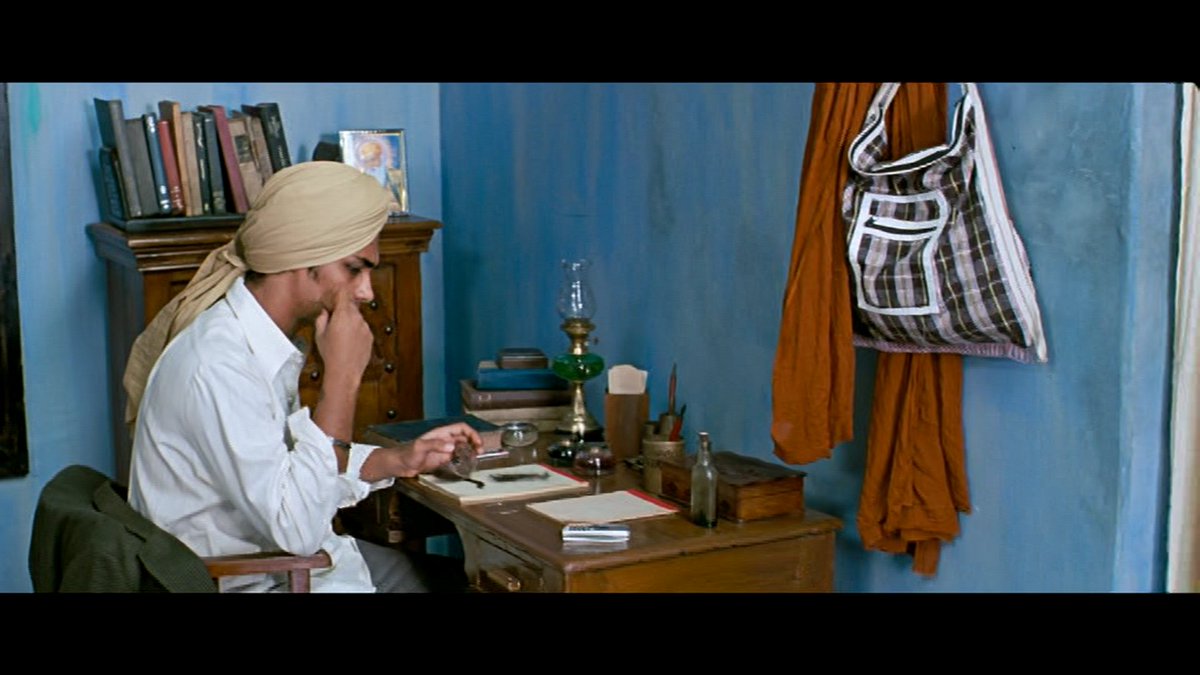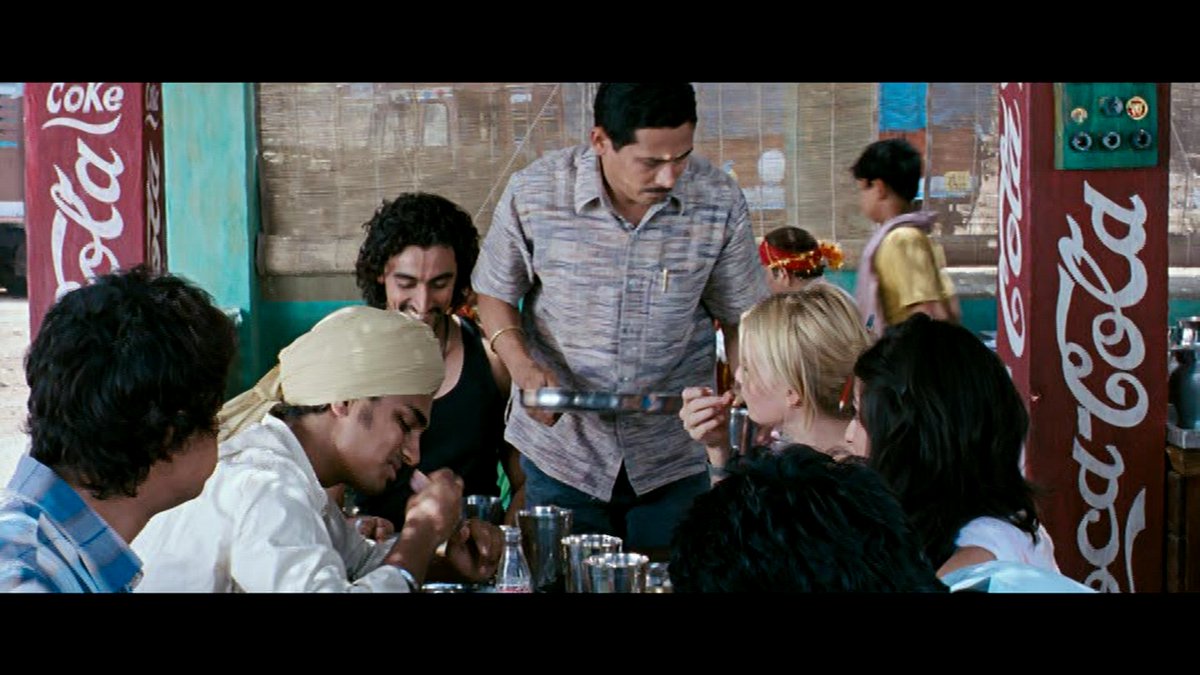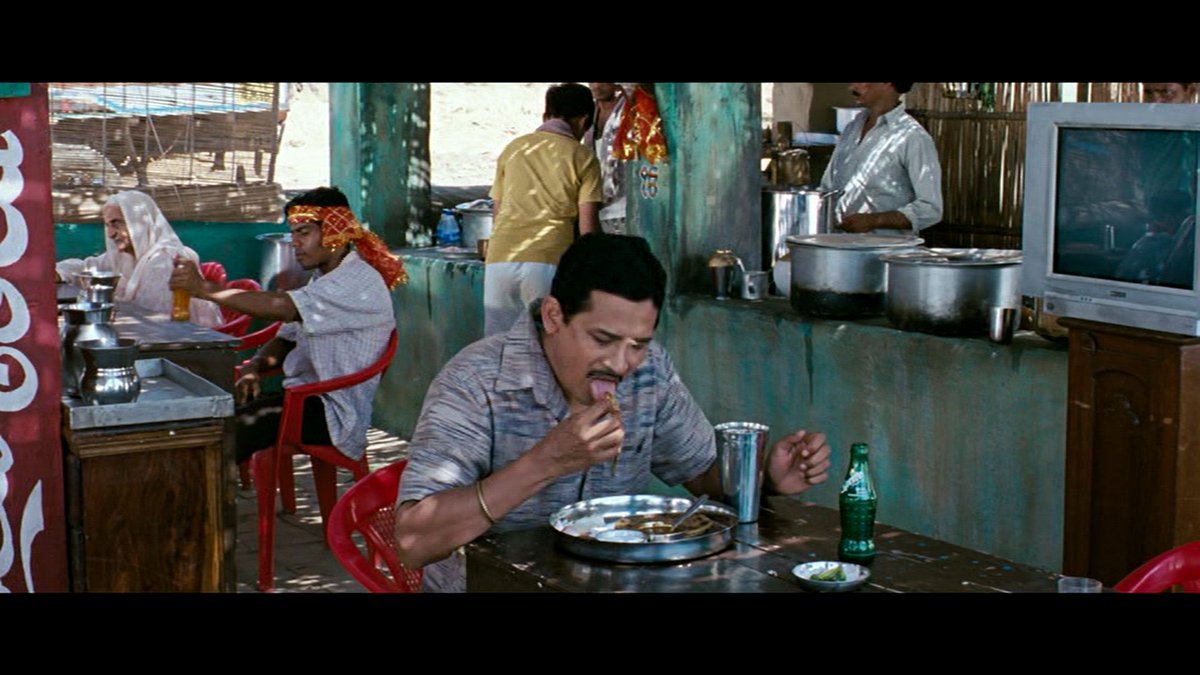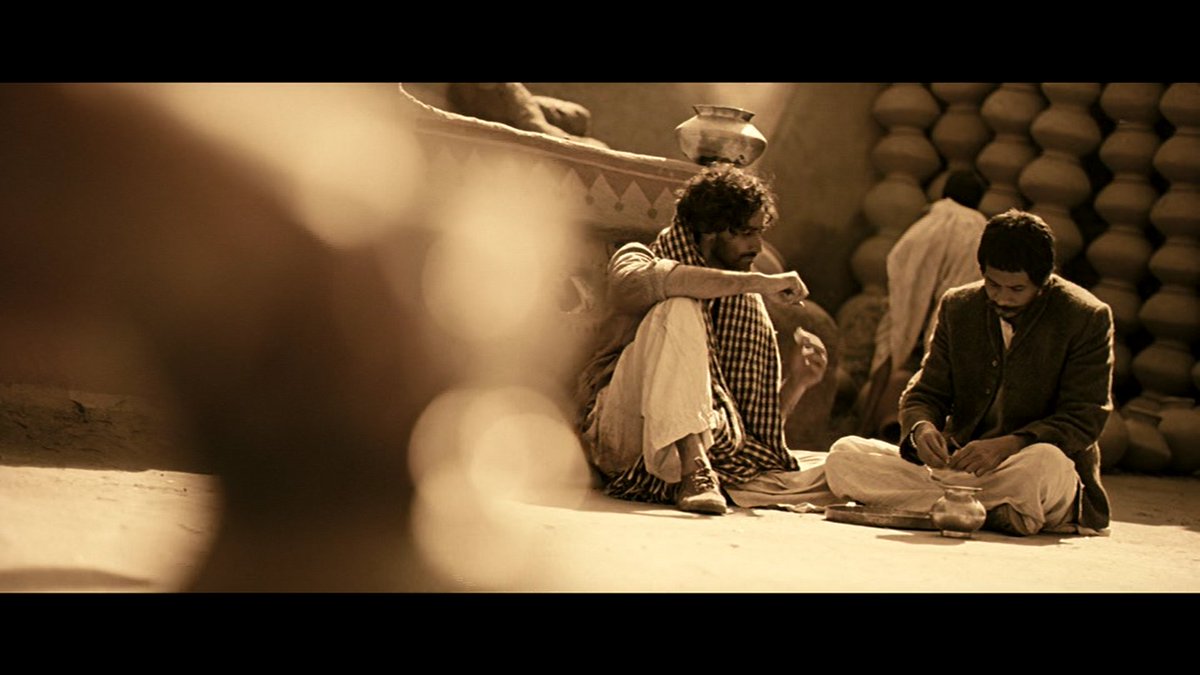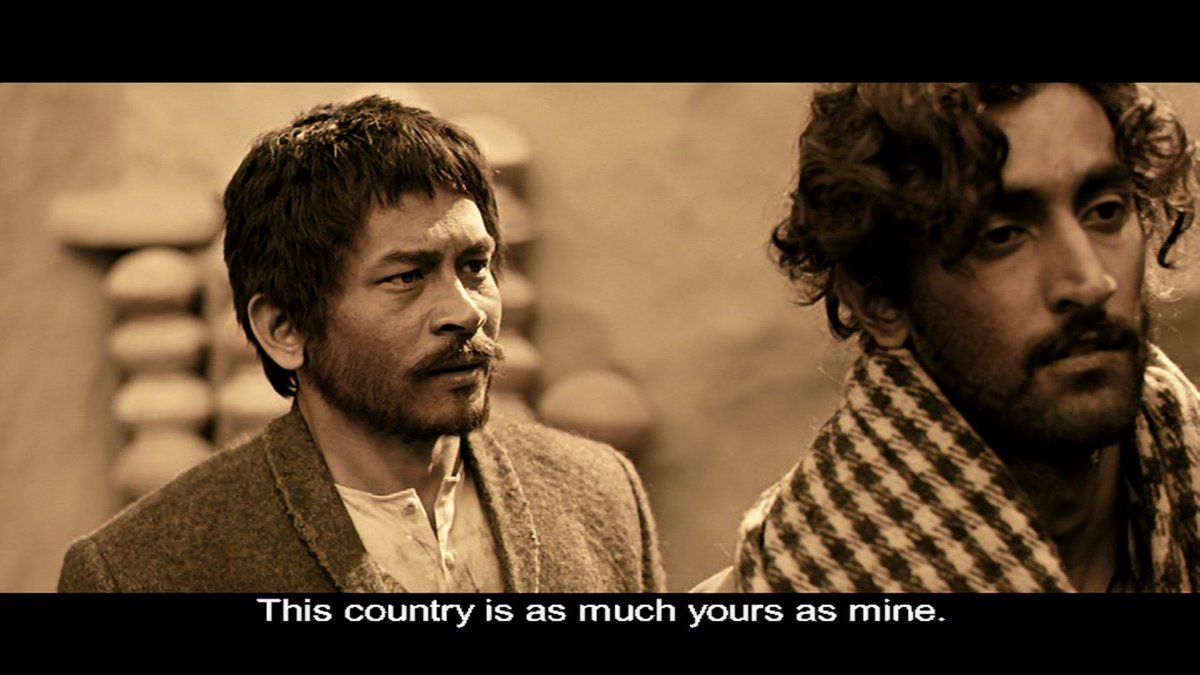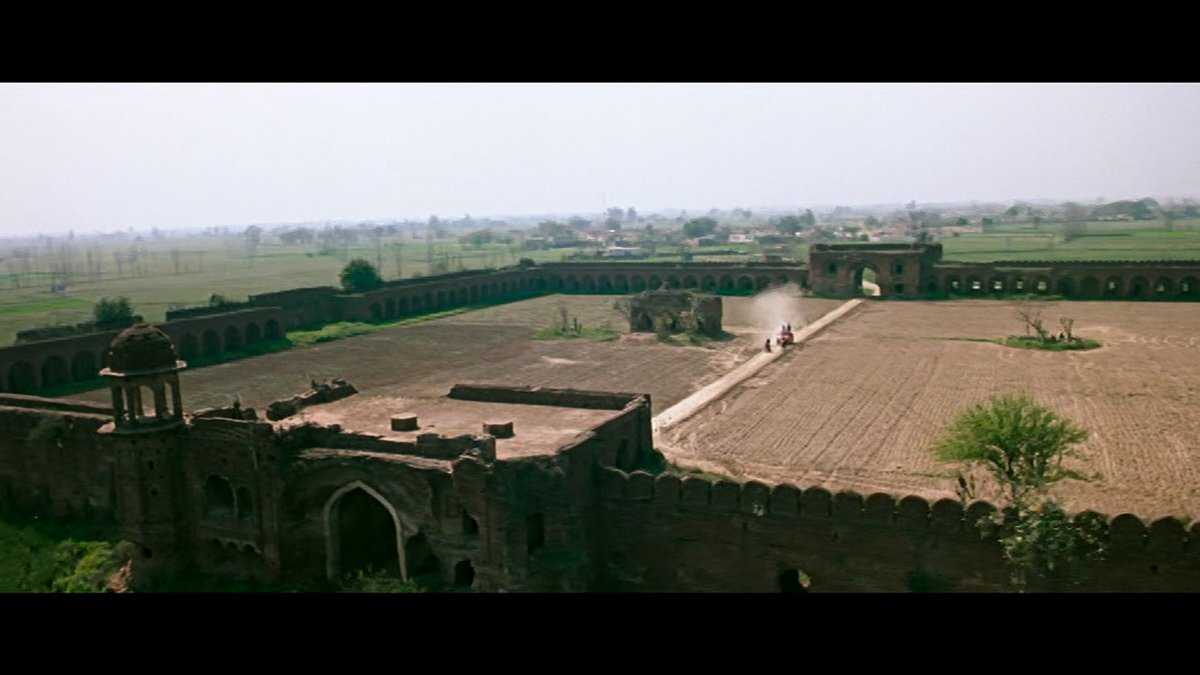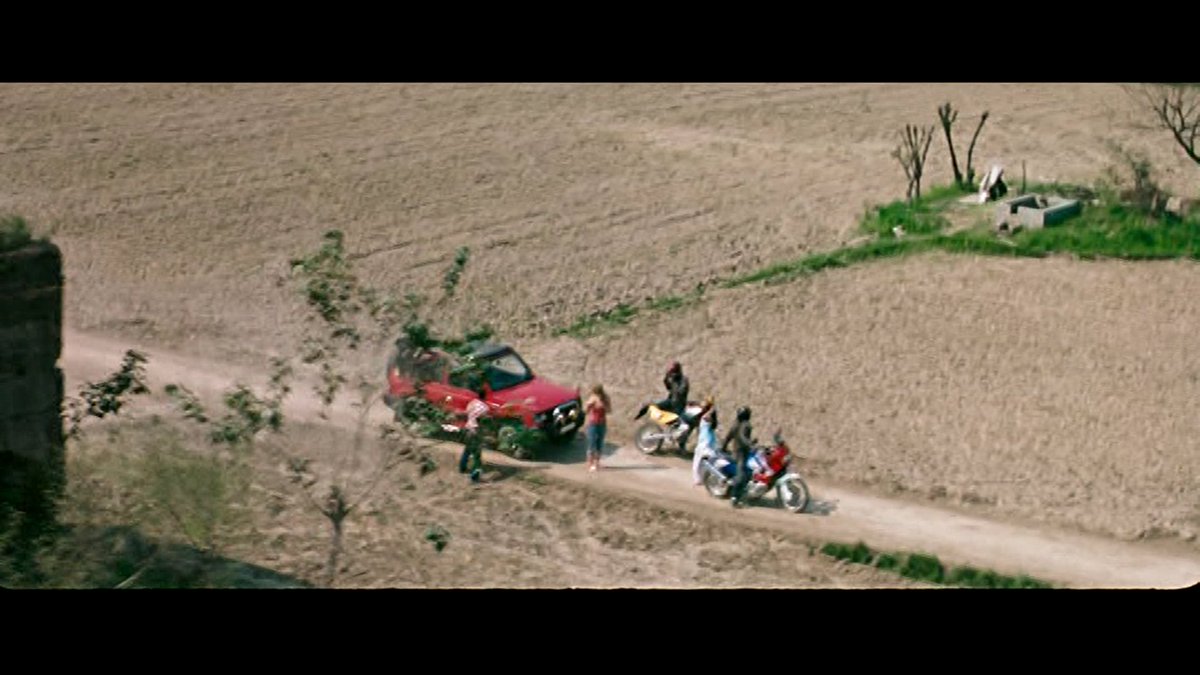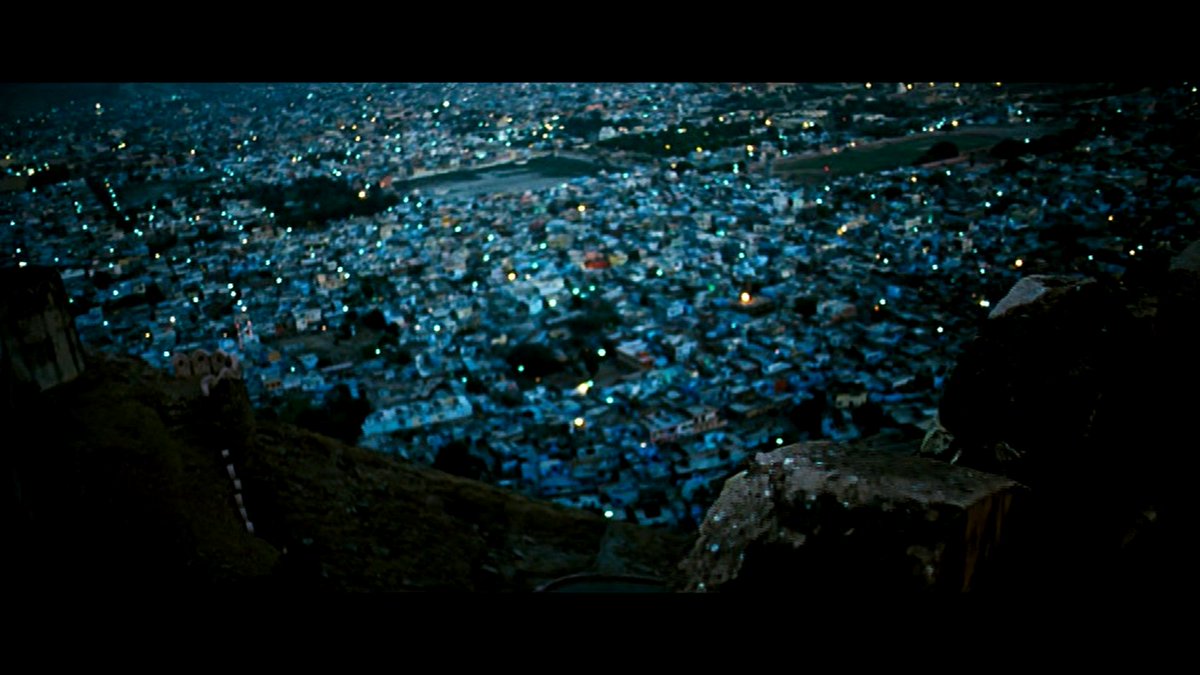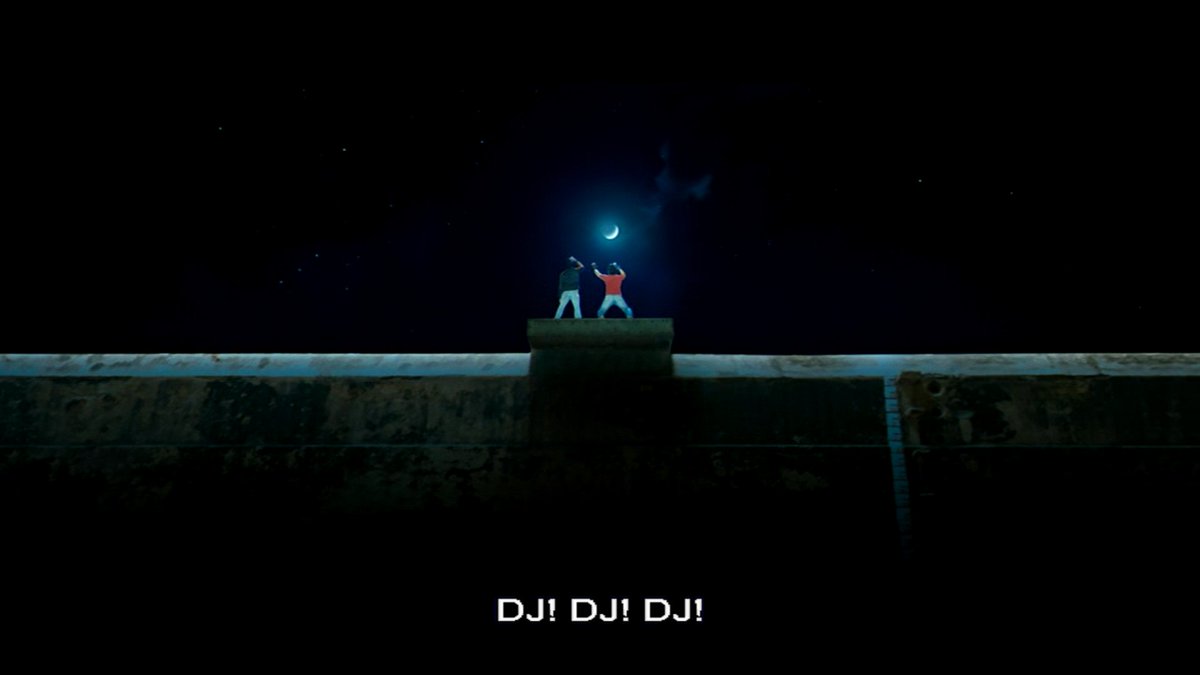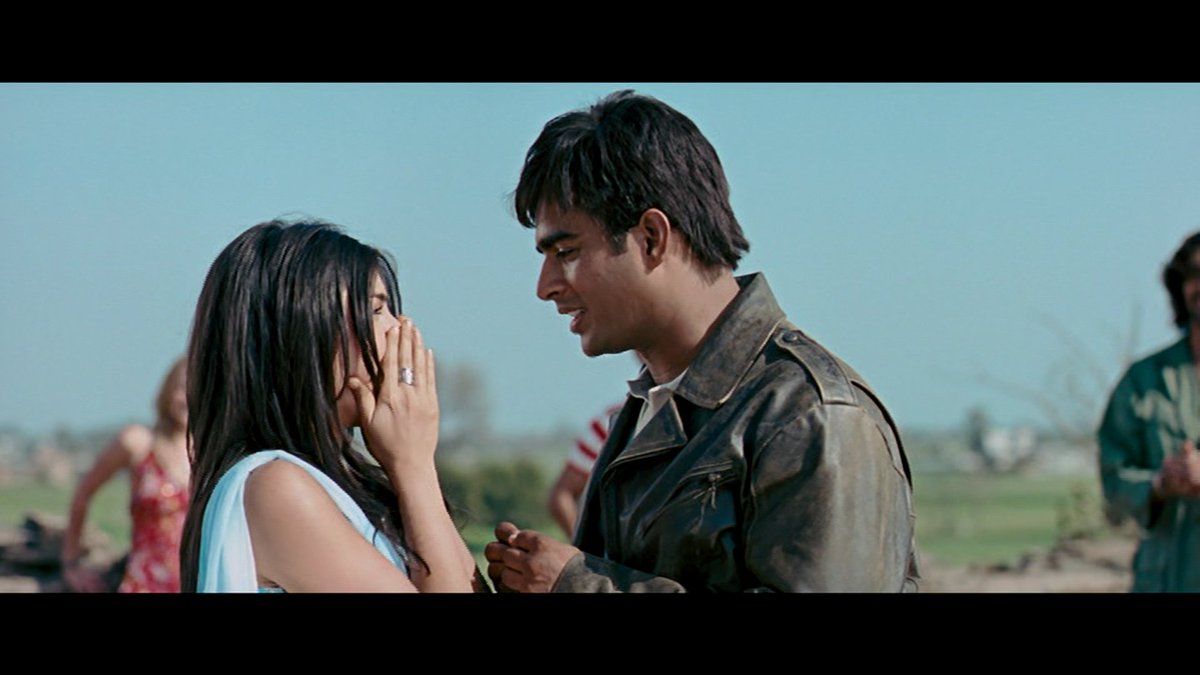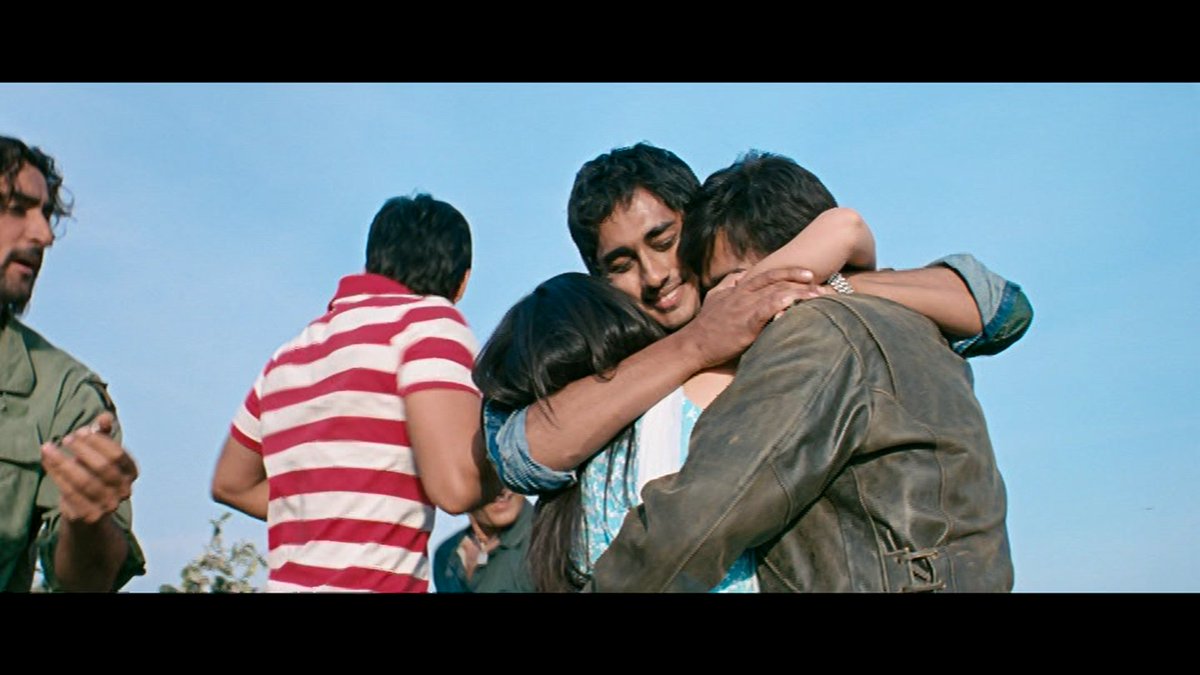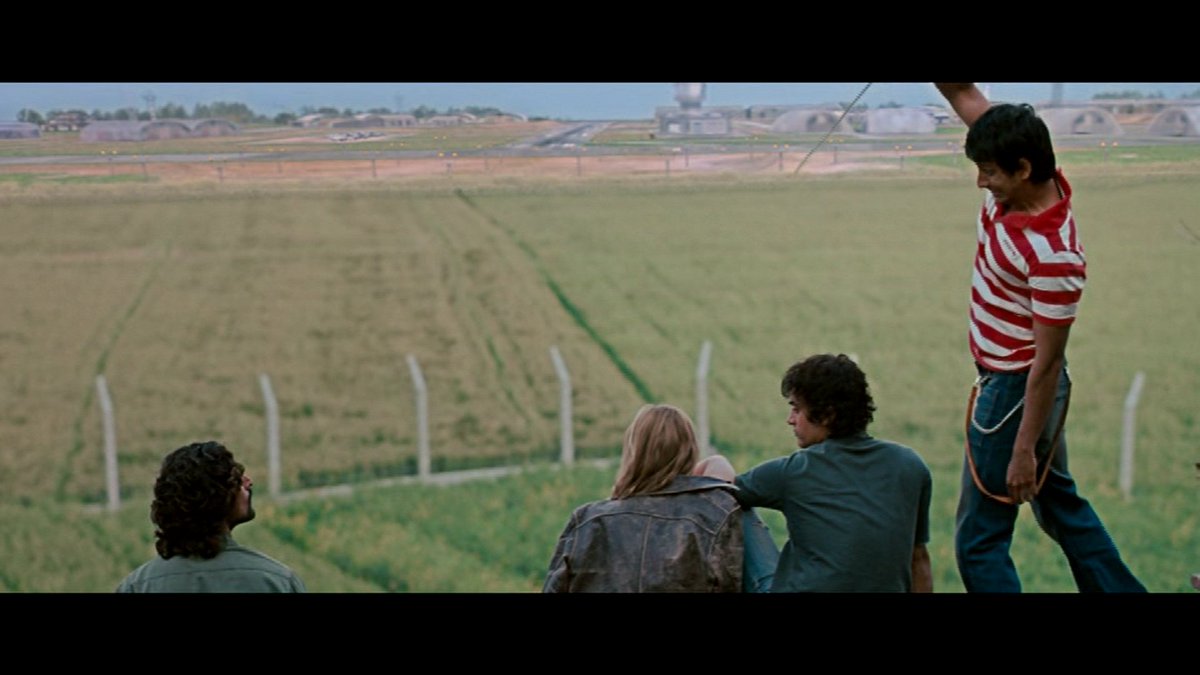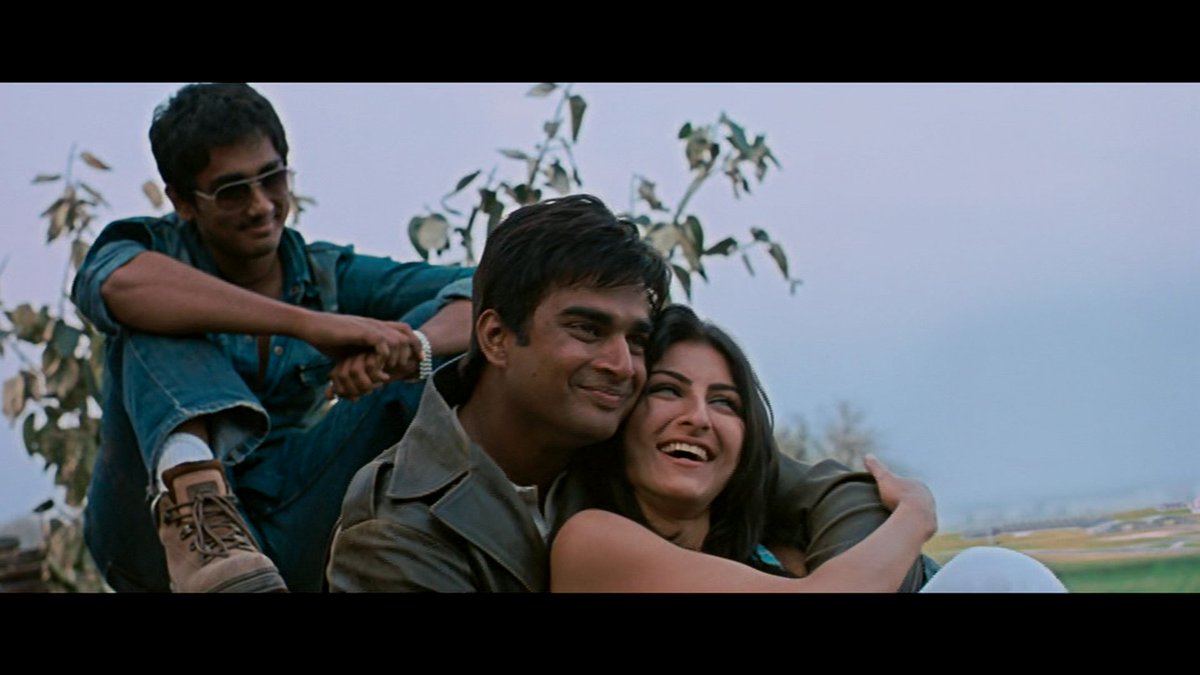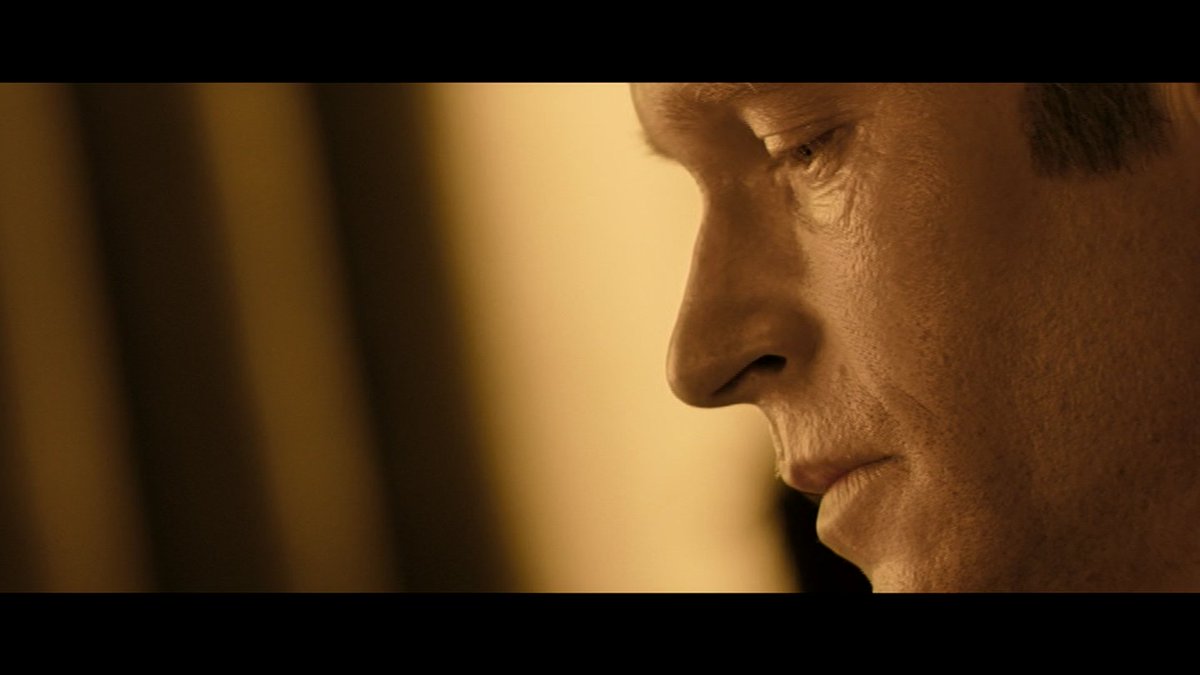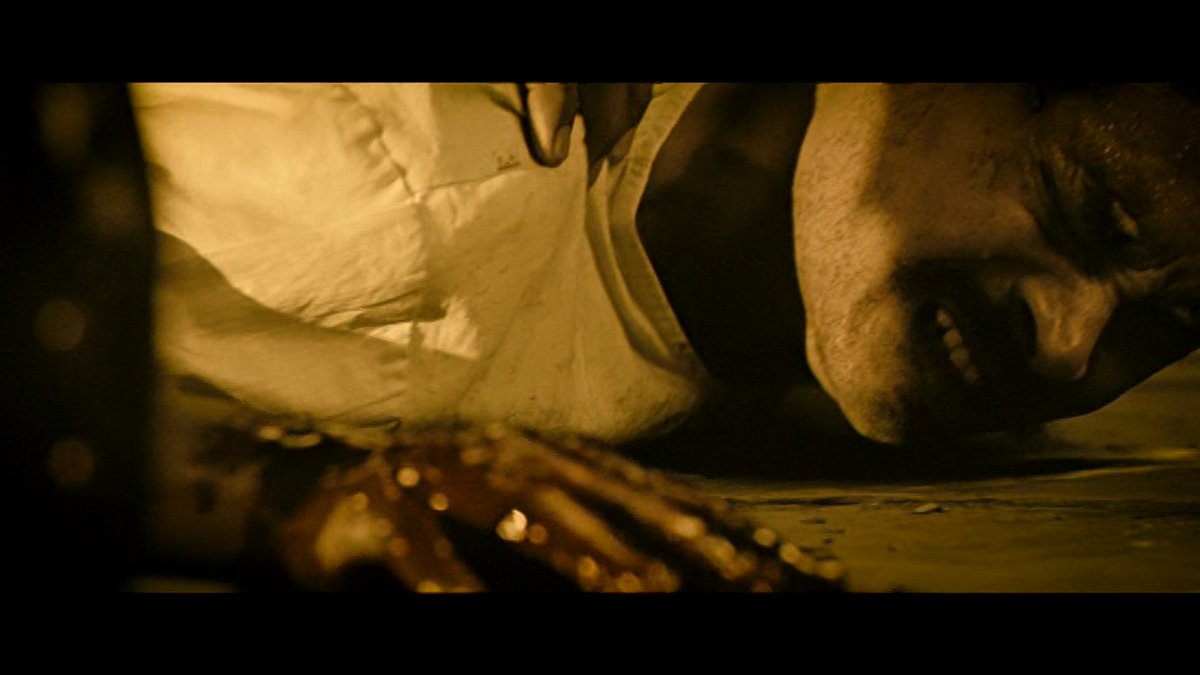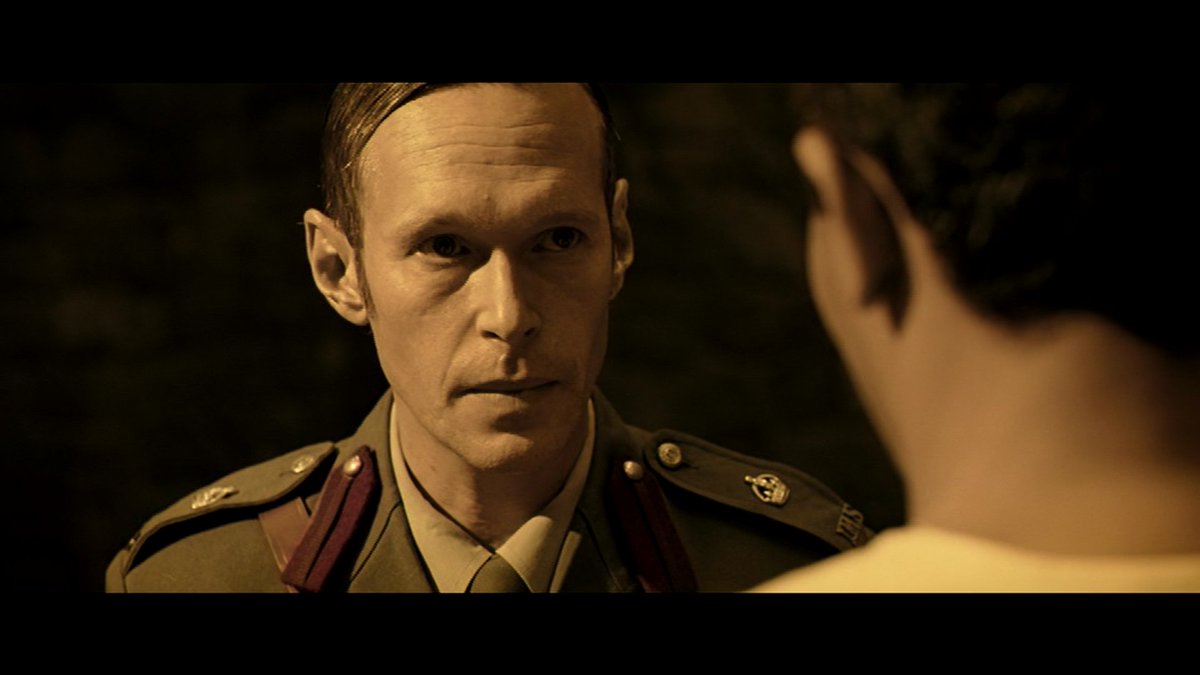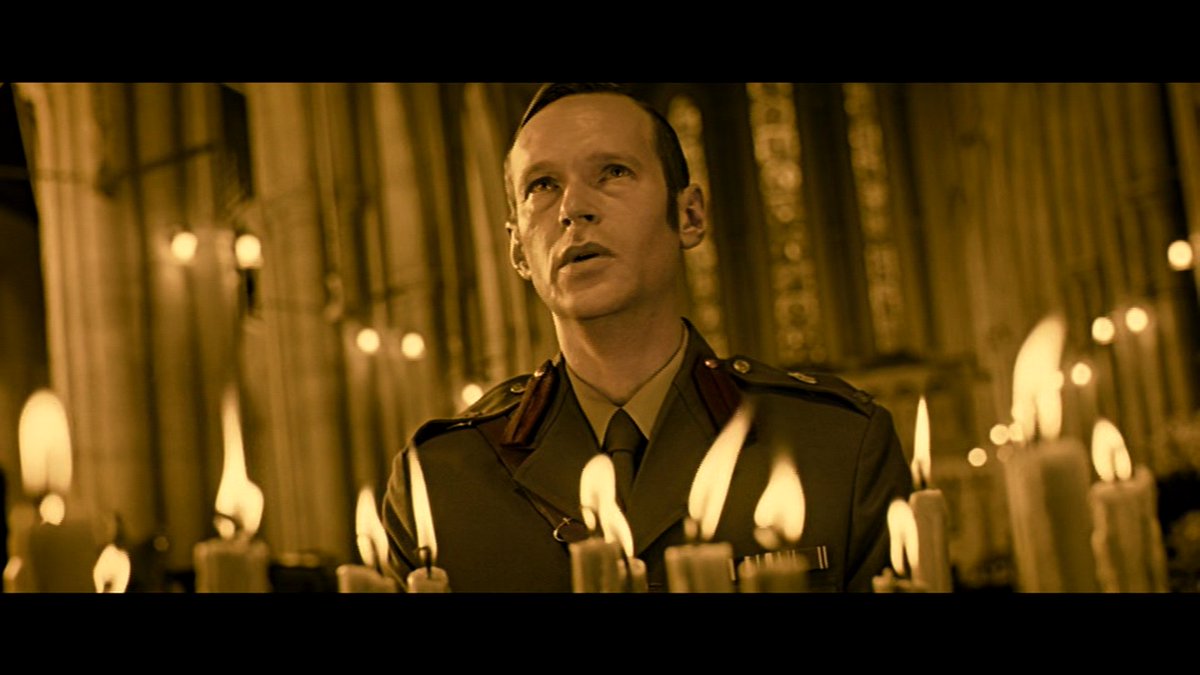A patriotic film that proposed a theory of correcting its nation& #39;s shortcomings. It emerged, stirred, and divulged many things. A film that every Indian Cinema viewer is proud of.
A Fan-Thread on Rakeysh Omprakash Mehra& #39;s Rang De Basanti.
A Fan-Thread on Rakeysh Omprakash Mehra& #39;s Rang De Basanti.
Initially, I was surprised to witness the film within the film style. The first set of shots depicts the hanging of the freedom fighters, the scenario intercuts with a foreigner reading a book. The most jubilant part is the heroic score of Rahman, instead of conventional pathos.
I just thought of appreciating the title sequences, which are unique, random, still has some deeper meaning. Filmmaker Mehra said, "We shot them in different shutter speed and brought them to normal, it was editor& #39;s dream and nightmare as well."
The film opens with the character Sue. She is the driving force of the narrative, it was her emotion that& #39;s eventually shared by all the other leads. The boding she has with the past (India) is suggested by a dialogue of her, she says to her bossy boss, "Tumhari Maa ki Aankh".  https://abs.twimg.com/emoji/v2/... draggable="false" alt="😀" title="Grinning face" aria-label="Emoji: Grinning face">
https://abs.twimg.com/emoji/v2/... draggable="false" alt="😀" title="Grinning face" aria-label="Emoji: Grinning face">
We get easily intrigued by the foreign characters, but how to make the masses fell in love with such character? It is imperative, after-all. I guess with wonderful dialogues. Masterclass you call it, well, if you wish.
The narrative concisely demonstrates the need for Rang De Basanti. The film begins with the quote of Azad, where he provokes the futile youth who doesn& #39;t care for the well-being of their nation. Yes, our system didn& #39;t introduce us to many things. We are all victims in a way.
The Paathshaala scene introduces the lead protagonists of the film. They are introduced as rather happy-go-lucky, partly quirky personalities. It has some brilliant colloquial dialogues. Btw, Binod Pradhan had used Helium Balloon lights for lighting up the fort for this sequence.
Here comes politics. At the end of the very first scene where the lead characters are introduced, they are shown as progressive thinking youngsters who are fronting the fundamentalistic doctrine and excessive cultural pride. The comment is clear and lucid here.
I assume the virtue of good screenplay is every step of it has the essence of the destination. It cannot be pathless. The way Sue imagines DJ as Azaad, and the introduction of Madhavan& #39;s character and Kirron Kher. I loved the blocking in Pic 4. Exceptional is the word.
I think the more we watch classics, the more we learn about the technique of filmmaking. The details make a huge difference, it could make an ordinary film look healthier. RDB is a masterpiece, no disputes. Just look at the way the camera tilts before the time-zone shift. Waah.
Talking about the cinematography choices, The director stated that in that they tried to avoid the wide lenses in the entire first half. Most of them are mid or close shots, the lenses used were 18 & 25mm.
Look at arc of Siddharth& #39;s character who doesn& #39;t have any remote sense belonging to the nation he was born in. Madhavan& #39;s character says the line of the movie. And ironically, Aamir (DJ) lives in his own world wooing Sue. Can we call RDB, a pure genre film of coming-of-age?
Aamir Khan Apprection Tweet.
The way he cracked his look, dialect, and wit is impeccable. Perfectionist you said, well said. Yeah.
The way he cracked his look, dialect, and wit is impeccable. Perfectionist you said, well said. Yeah.
Filmmaker Mehra has staged the scenes in a way, no one character was given special prominence. All the boys are seen together in a large chunk of shots. Credits to Aamir Khan for his commitment to the cinema, instead of stardom.
How to plant a subplot without much of an emphasis. I& #39;m sure everybody would& #39;ve noticed this, but not given much of a thought. Then cutting immediately to Masthi Ka Paathshaala song, there& #39;s a brilliant underlined technique in writing.
Masti ka Paathshaala is pure love, almost anthem-like. Perhaps, change could be rather hefty, but the adoration the boys have for the nation could be discerned in this song. After all, keeping the politics aside, we all love our motherland. Just saying.
This is the first time when the scenario cuts to the film within a film zone, it is brief, but makes a lasting impression.
The song that has become a symbol of patriotism. All praise to Prasoon Joshi& #39;s lyrics, Raju Sundaram& #39;s choreography, Binod Pradhan& #39;s camera-play, and the performances. The plot now is breathing Punjab& #39;s air, the very soil where the revolutionary fighters breath their last.
Not forgetting the genius of Rahman who brought Bhangra and Chitra Ma& #39;am together. Sheer genius.
Transitions - A) Time-period, and (B) the other is Karan& #39;s (Siddharth) transformation from a US-job-dreaming-Indian-citizen to an honest patriot. Beautiful scene. <3.
The irony of the Past and Present. The Pandey-Aslam relationship has an ambiguity of sharing the same table, which wasn& #39;t the case with Ram and Ashfaq. They were brothers and shared the same plate. Kudos to the depth in the writing.
This was another observation I thought of describing with the substantial instances. The filmmaker chooses to let the audience breathe-in and completely feel the aesthetics of the locations were important sequences take place. Wide and Aerials shots are used for that purpose.
What a song! Pure romance is the word. I absolutely love every second of the song, practically remember almost all the shots.
"mann ki gali tu phuharoon si aa
bheeg jaye mere khwabon ka kafila
jise tu gungunaye meri dhun hai wahin"
Waah. Prasoon Sahab.
"mann ki gali tu phuharoon si aa
bheeg jaye mere khwabon ka kafila
jise tu gungunaye meri dhun hai wahin"
Waah. Prasoon Sahab.

 Read on Twitter
Read on Twitter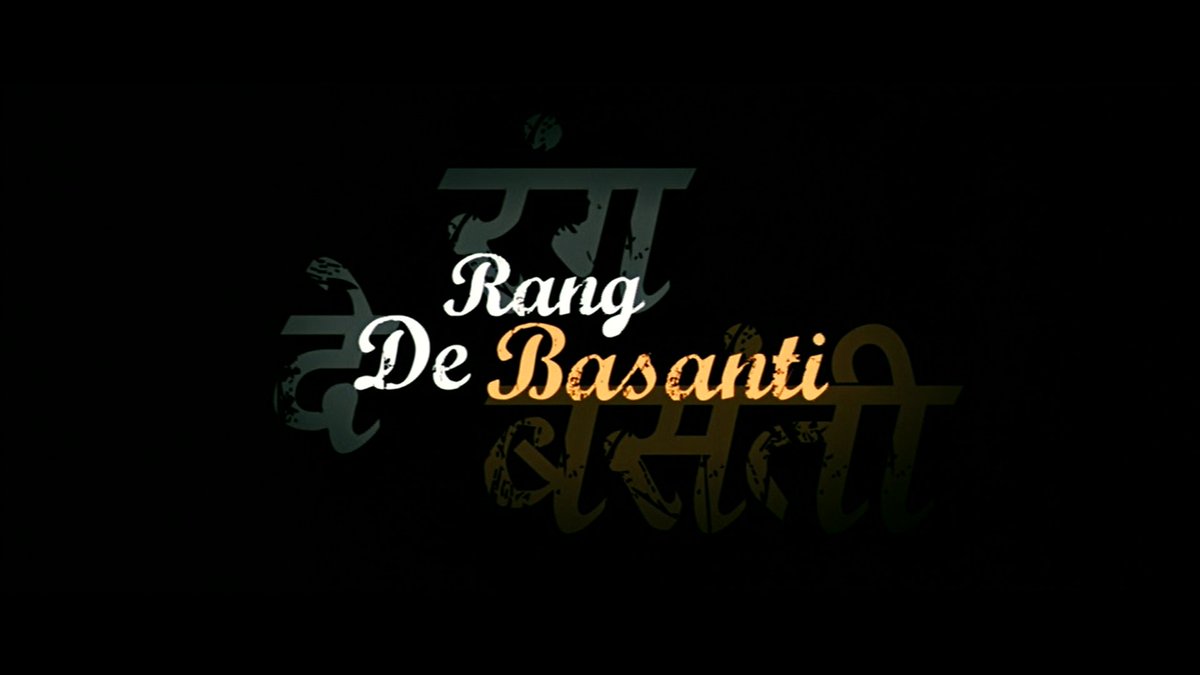
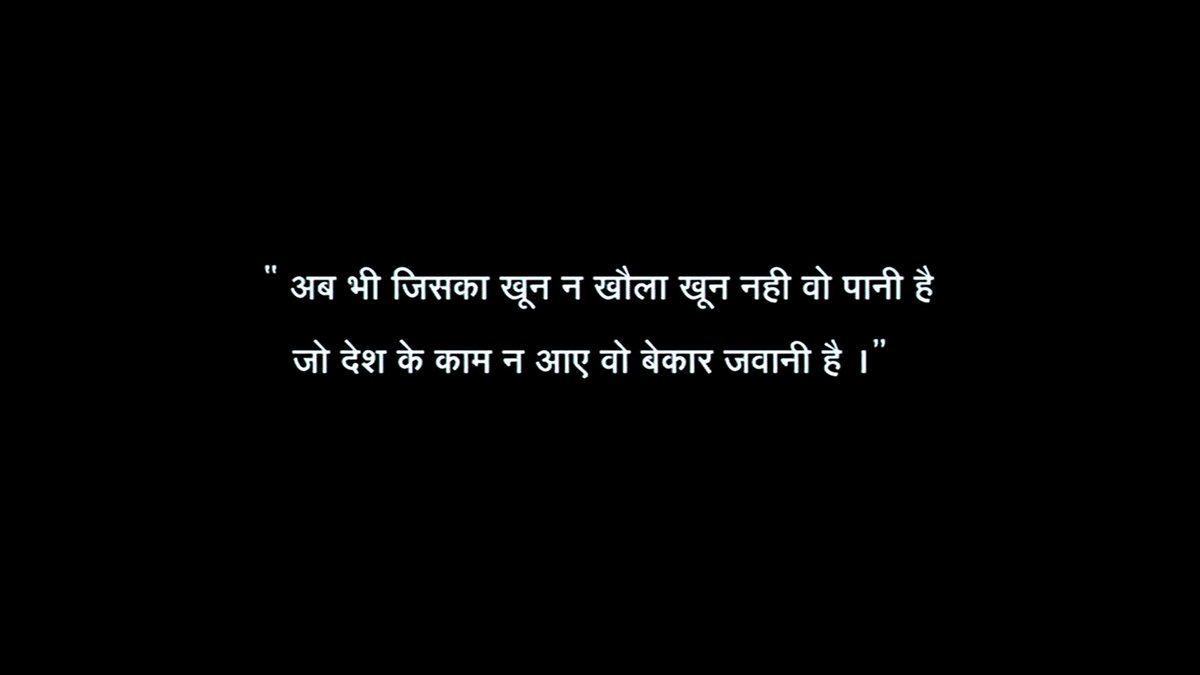
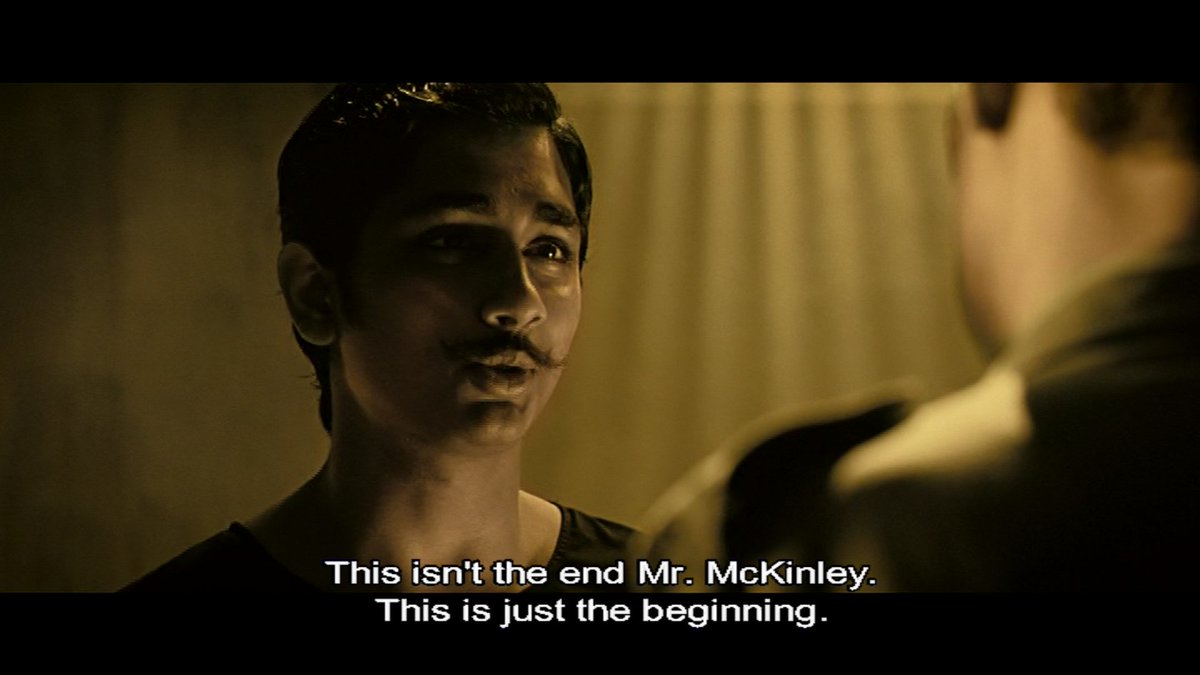
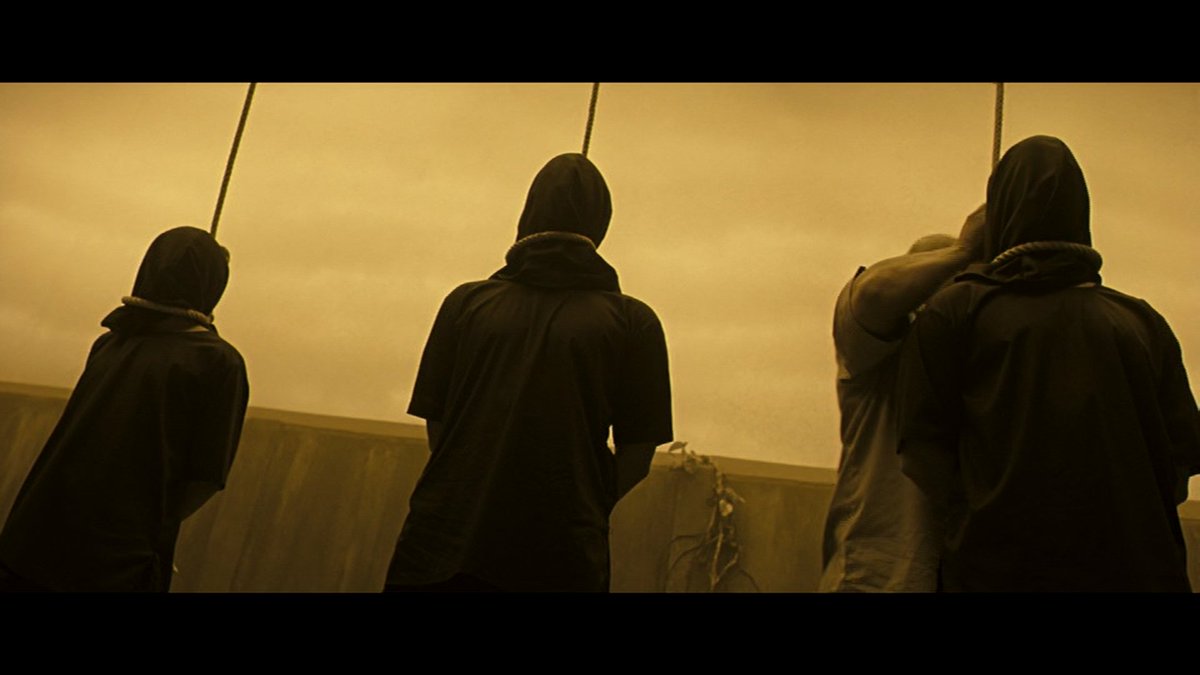
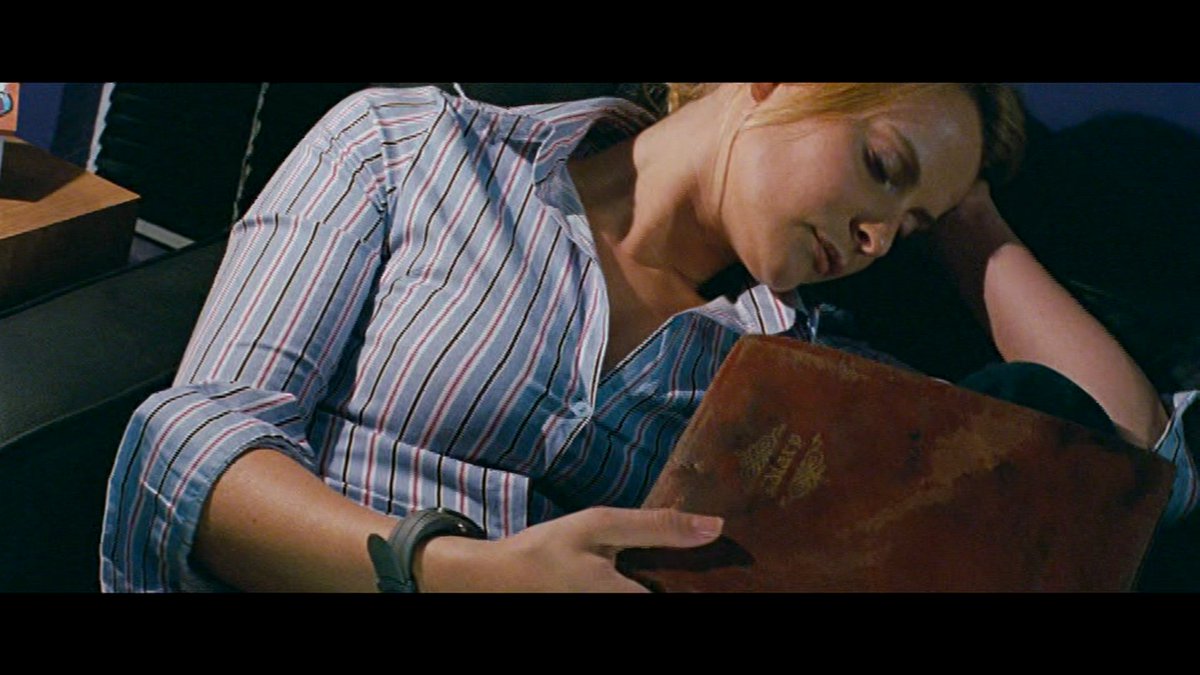
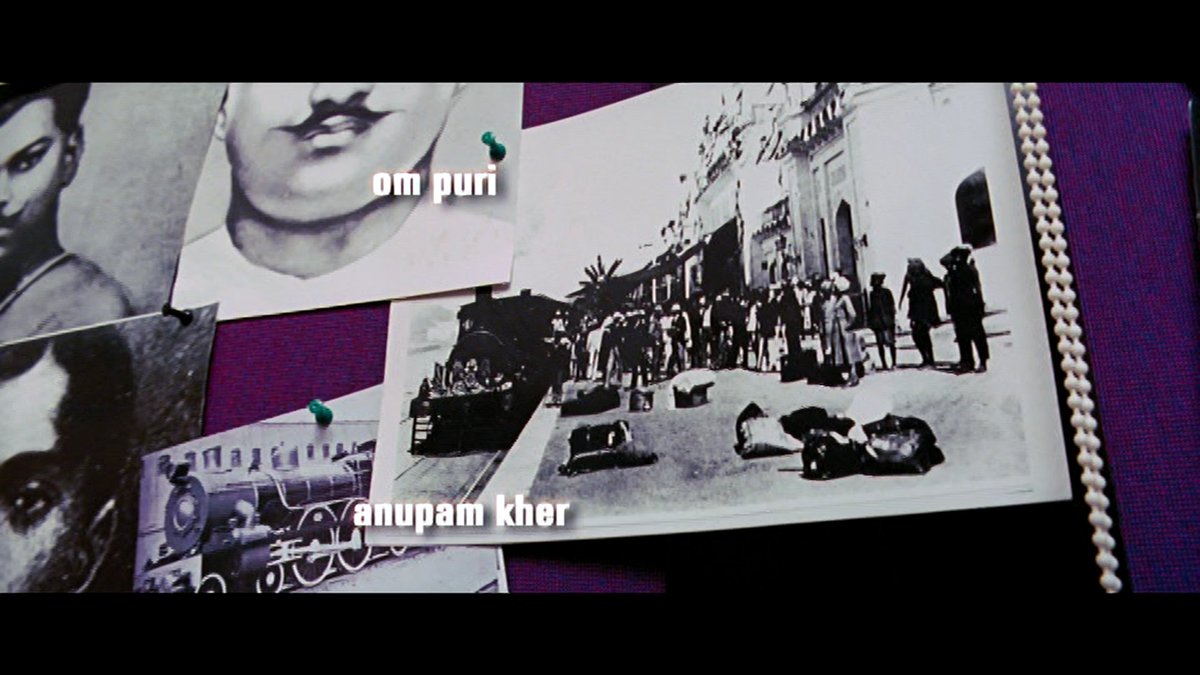
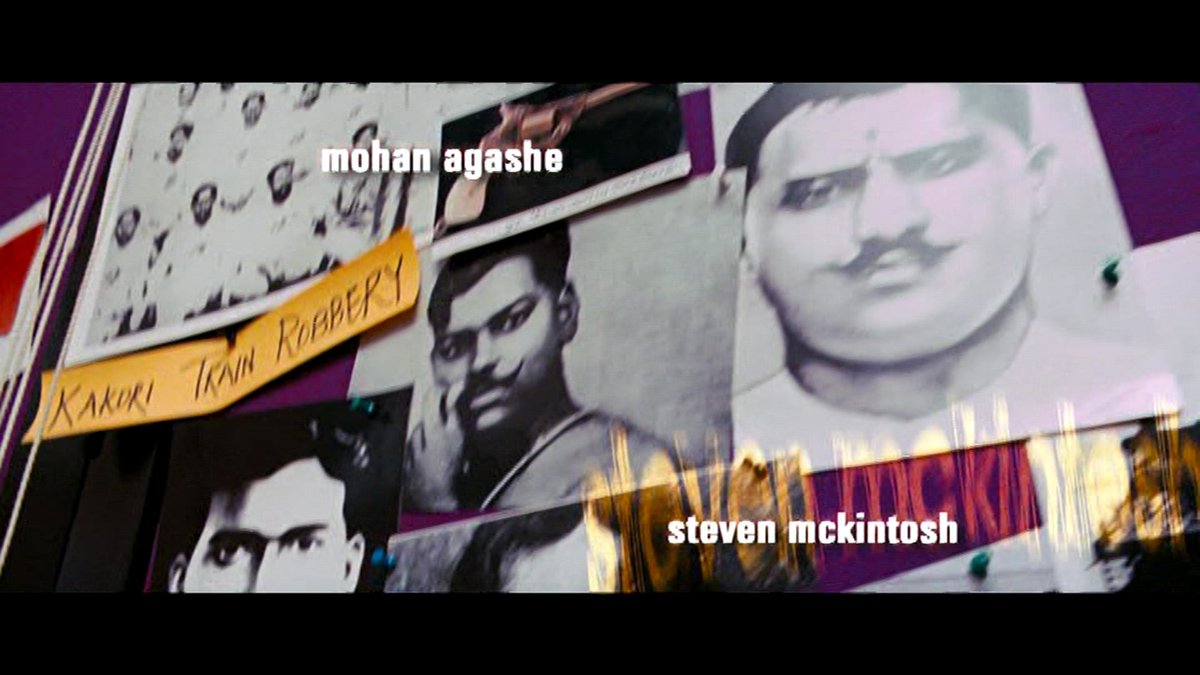
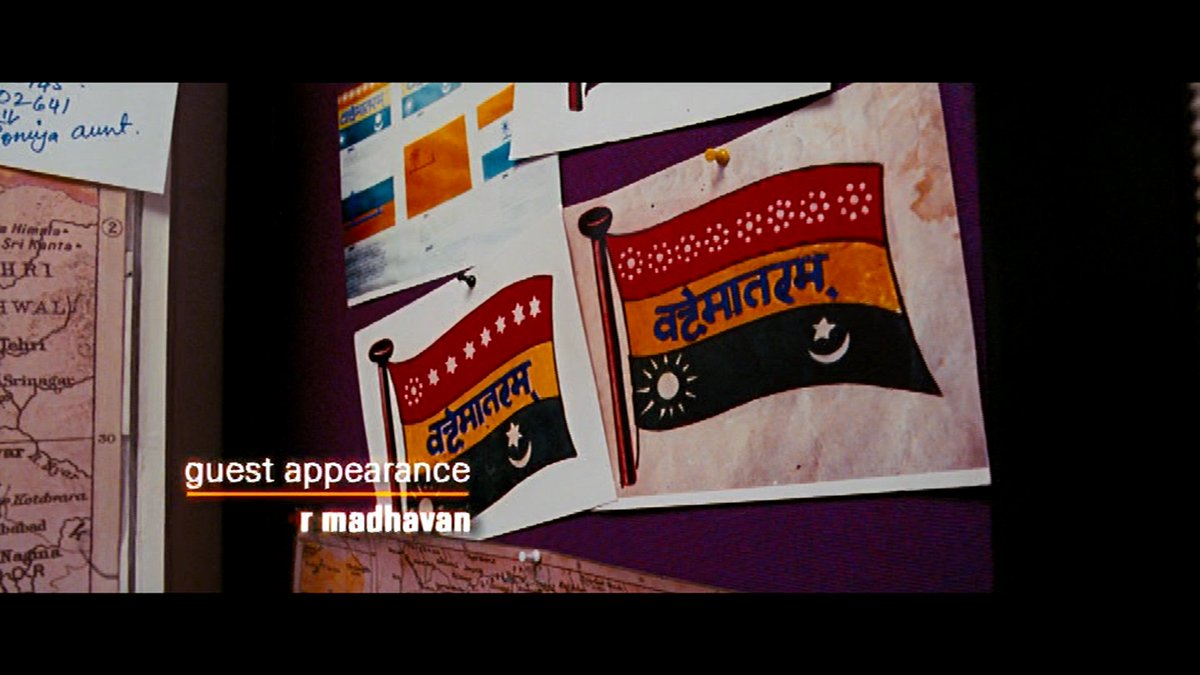
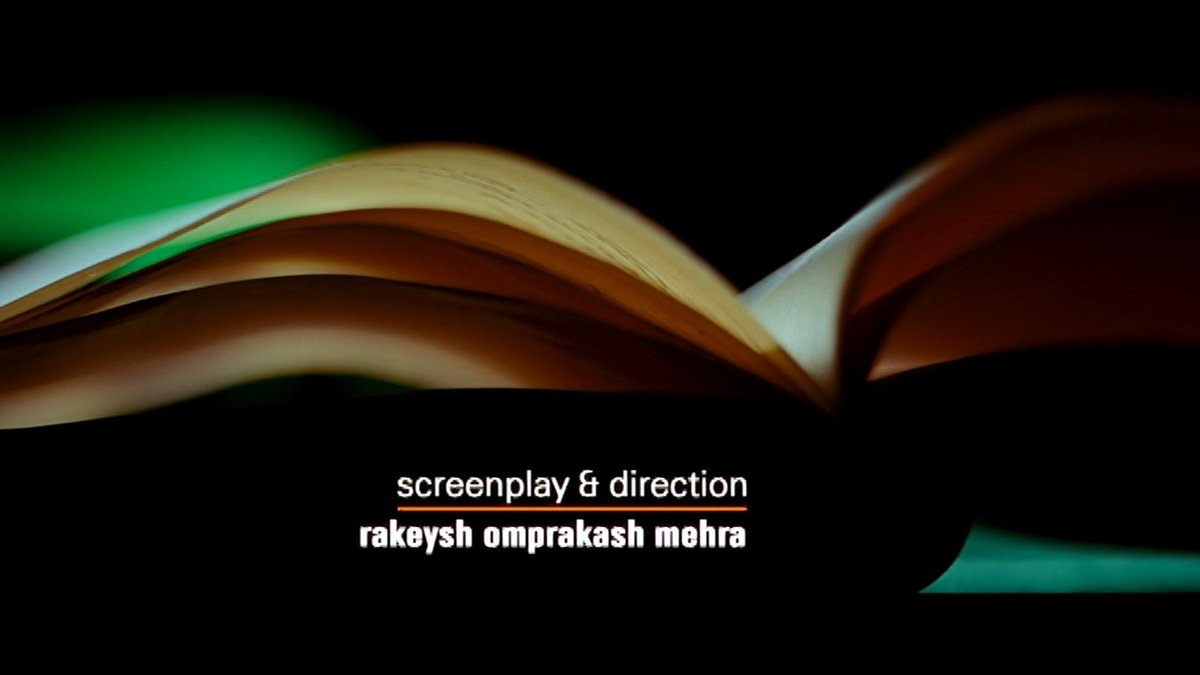
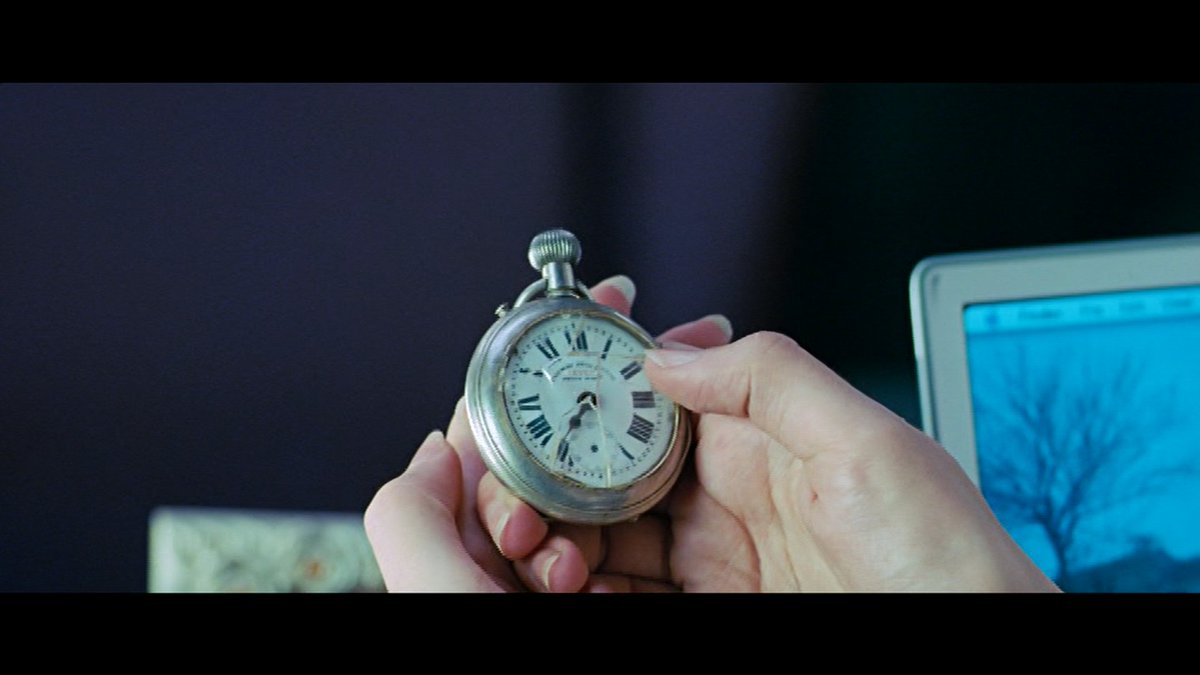 " title="The film opens with the character Sue. She is the driving force of the narrative, it was her emotion that& #39;s eventually shared by all the other leads. The boding she has with the past (India) is suggested by a dialogue of her, she says to her bossy boss, "Tumhari Maa ki Aankh". https://abs.twimg.com/emoji/v2/... draggable="false" alt="😀" title="Grinning face" aria-label="Emoji: Grinning face">">
" title="The film opens with the character Sue. She is the driving force of the narrative, it was her emotion that& #39;s eventually shared by all the other leads. The boding she has with the past (India) is suggested by a dialogue of her, she says to her bossy boss, "Tumhari Maa ki Aankh". https://abs.twimg.com/emoji/v2/... draggable="false" alt="😀" title="Grinning face" aria-label="Emoji: Grinning face">">
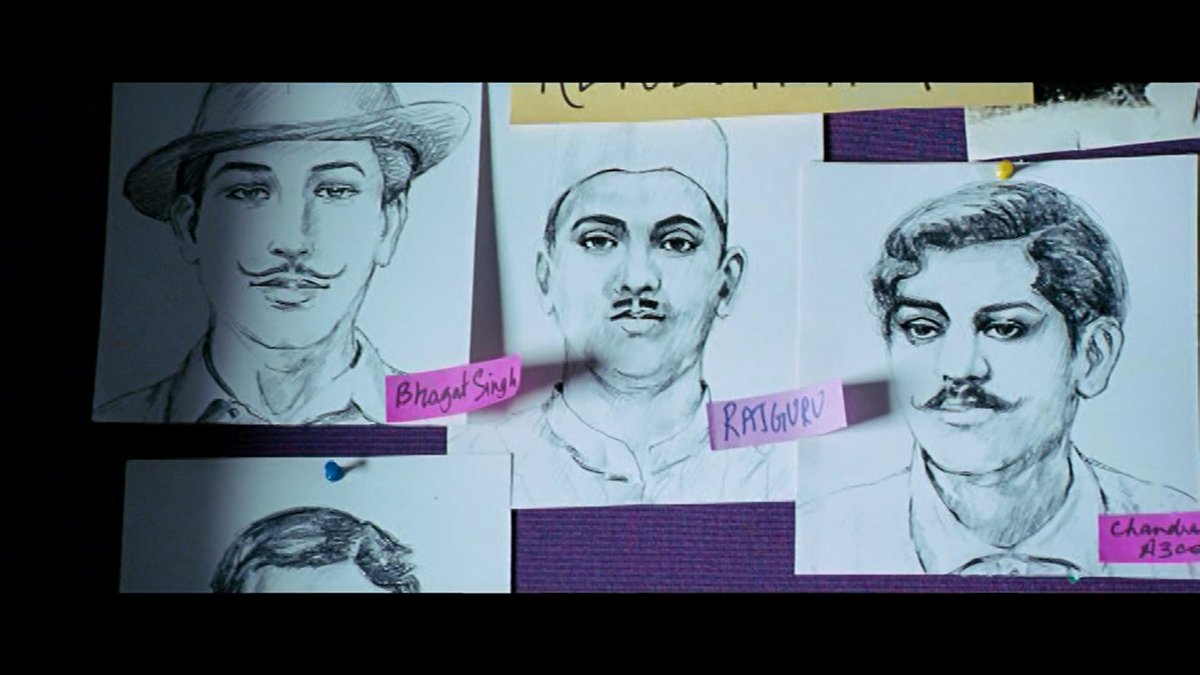 " title="The film opens with the character Sue. She is the driving force of the narrative, it was her emotion that& #39;s eventually shared by all the other leads. The boding she has with the past (India) is suggested by a dialogue of her, she says to her bossy boss, "Tumhari Maa ki Aankh". https://abs.twimg.com/emoji/v2/... draggable="false" alt="😀" title="Grinning face" aria-label="Emoji: Grinning face">">
" title="The film opens with the character Sue. She is the driving force of the narrative, it was her emotion that& #39;s eventually shared by all the other leads. The boding she has with the past (India) is suggested by a dialogue of her, she says to her bossy boss, "Tumhari Maa ki Aankh". https://abs.twimg.com/emoji/v2/... draggable="false" alt="😀" title="Grinning face" aria-label="Emoji: Grinning face">">
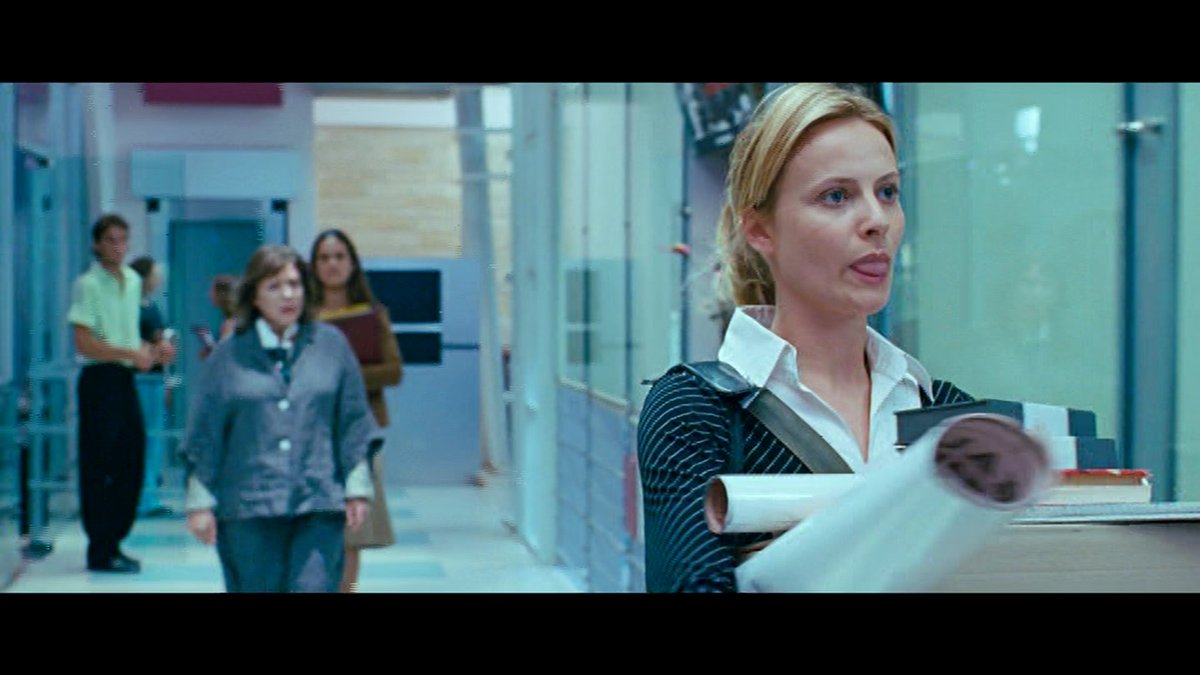 " title="The film opens with the character Sue. She is the driving force of the narrative, it was her emotion that& #39;s eventually shared by all the other leads. The boding she has with the past (India) is suggested by a dialogue of her, she says to her bossy boss, "Tumhari Maa ki Aankh". https://abs.twimg.com/emoji/v2/... draggable="false" alt="😀" title="Grinning face" aria-label="Emoji: Grinning face">">
" title="The film opens with the character Sue. She is the driving force of the narrative, it was her emotion that& #39;s eventually shared by all the other leads. The boding she has with the past (India) is suggested by a dialogue of her, she says to her bossy boss, "Tumhari Maa ki Aankh". https://abs.twimg.com/emoji/v2/... draggable="false" alt="😀" title="Grinning face" aria-label="Emoji: Grinning face">">
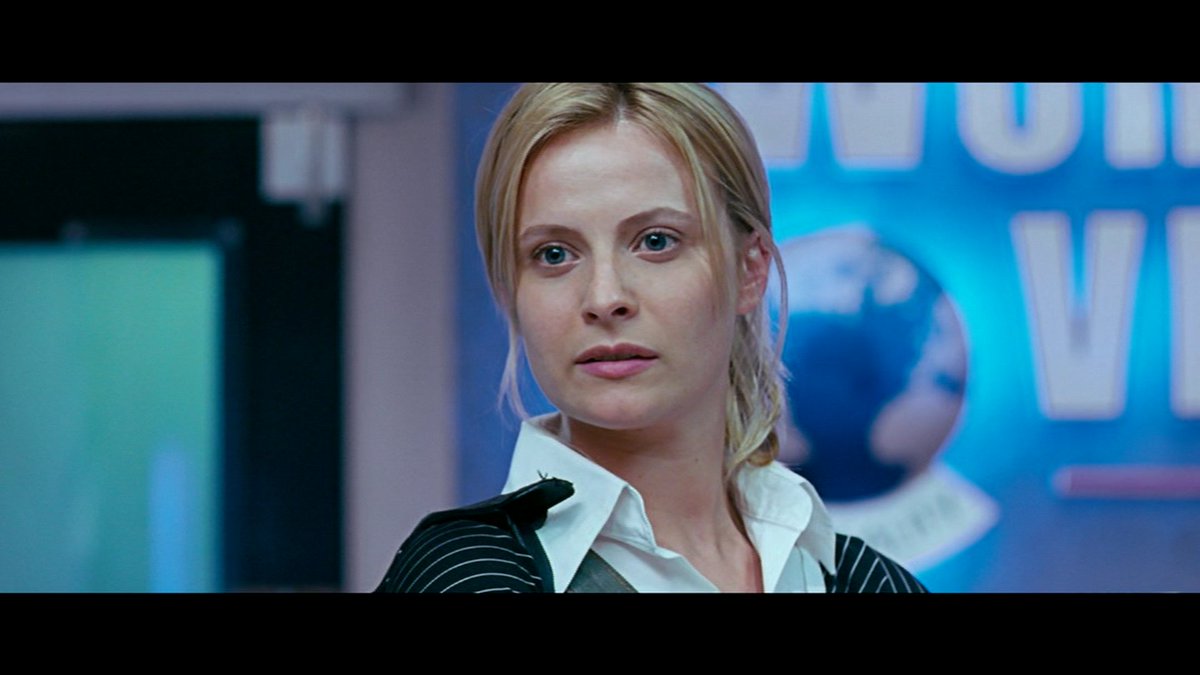 " title="The film opens with the character Sue. She is the driving force of the narrative, it was her emotion that& #39;s eventually shared by all the other leads. The boding she has with the past (India) is suggested by a dialogue of her, she says to her bossy boss, "Tumhari Maa ki Aankh". https://abs.twimg.com/emoji/v2/... draggable="false" alt="😀" title="Grinning face" aria-label="Emoji: Grinning face">">
" title="The film opens with the character Sue. She is the driving force of the narrative, it was her emotion that& #39;s eventually shared by all the other leads. The boding she has with the past (India) is suggested by a dialogue of her, she says to her bossy boss, "Tumhari Maa ki Aankh". https://abs.twimg.com/emoji/v2/... draggable="false" alt="😀" title="Grinning face" aria-label="Emoji: Grinning face">">
